Yazidis
Aknalich is a small village with a population of 2500 located 20 kilometers away from Yerevan.
The village is virtually unknown to almost everyone in Armenia and would not be of any interest if it were not for the construction of the world’s largest Yazidi temple here in 2019.
The reader might ask who the Yazidis are? The Yazidis are an ethnic minority originating from Kurdistan — a distinct geographic region covering parts of Iraq, Syria, and Turkey.
It’s difficult to say exactly how many Yazidis there are in the world. Estimates range from one to one and a half million. The majority of Yazidis live in Iraq, approximately 600,000 people. In second place is Germany with 200,000, followed by Russia, Armenia, and Belgium, each with 35-40,000 people.
Yazidis are an eternally persecuted people without a state. Throughout their history, they have been subjected to persecution, massacre, and genocide by Muslims. The Yazidis suffered the most in World War I when they decided to rebel against the Turks who had become hostile towards them.
By joining the war on the side of the Russian Empire, Yazidis fought against the Ottoman Empire alongside Armenians. As a result, like the Armenians, the Yazidis suffered from the Turkish genocide. It’s unknown how many Yazidis were killed as a result of the genocide. Estimates vary and reach several hundred thousand people.
Yazidis fled from the genocide and found refuge in the Russian Empire. They ended up closest to Armenia and Georgia, then found refuge in Krasnodar and Stavropol. Afterwards, they went to Nizhny Novgorod, Novosibirsk, Yaroslavl, and other cities.
The Soviet Union had a favorable attitude towards Yazidis. The Kurdish language, which Yazidis speak and write in, received a writing system based on the Russian alphabet. Yazidi schools were organized, and the newspaper “Voice of the Yazidis” was published.
Under the protection of the USSR, persecution of the Yazidis stopped, but began again under Saddam Hussein. Hussein’s regime persecuted all the population of Kurdistan, including the Yazidis.
The next wave of genocide hit the Yazidis from the Islamic State. In 2014, ISIS militants killed more than 5,000 Yazidis, 5-10,000 people were enslaved, and about 40,000 people fled to the mountains in northern Iraq, where they were rescued by the Kurdish army.
The reasons for persecution of Yazidis are simple: their religion. Yazidis practice their own religion, Yazidism. It should be noted that the Yazidi religion is very original, and the reasons for hostility towards it are quite clear. The fact is that Yazidis worship... the peacock.
⁂
There is a banner at the entrance to Aknalich that reads: “Someone died at the age of 27”. It’s about the war with Azerbaijan.
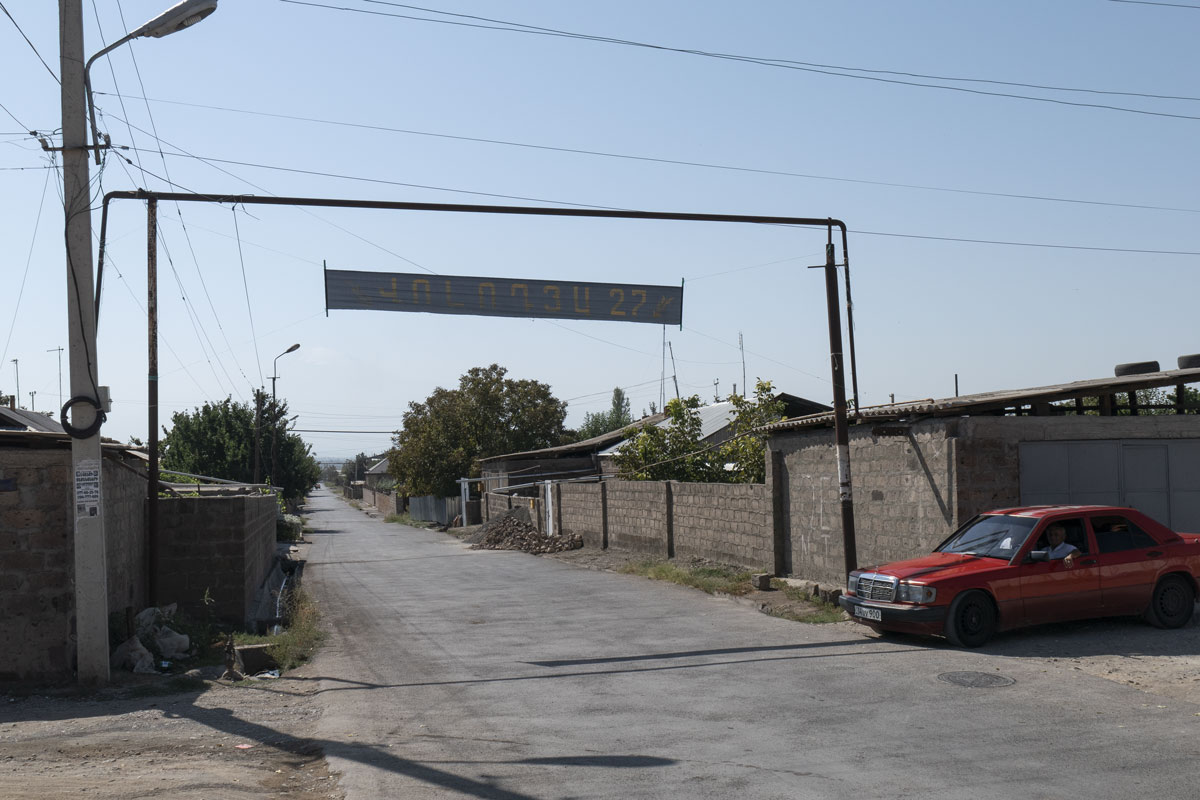
Aknalich is a village that is poor even by Armenian standards. There is simply catastrophic poverty here.
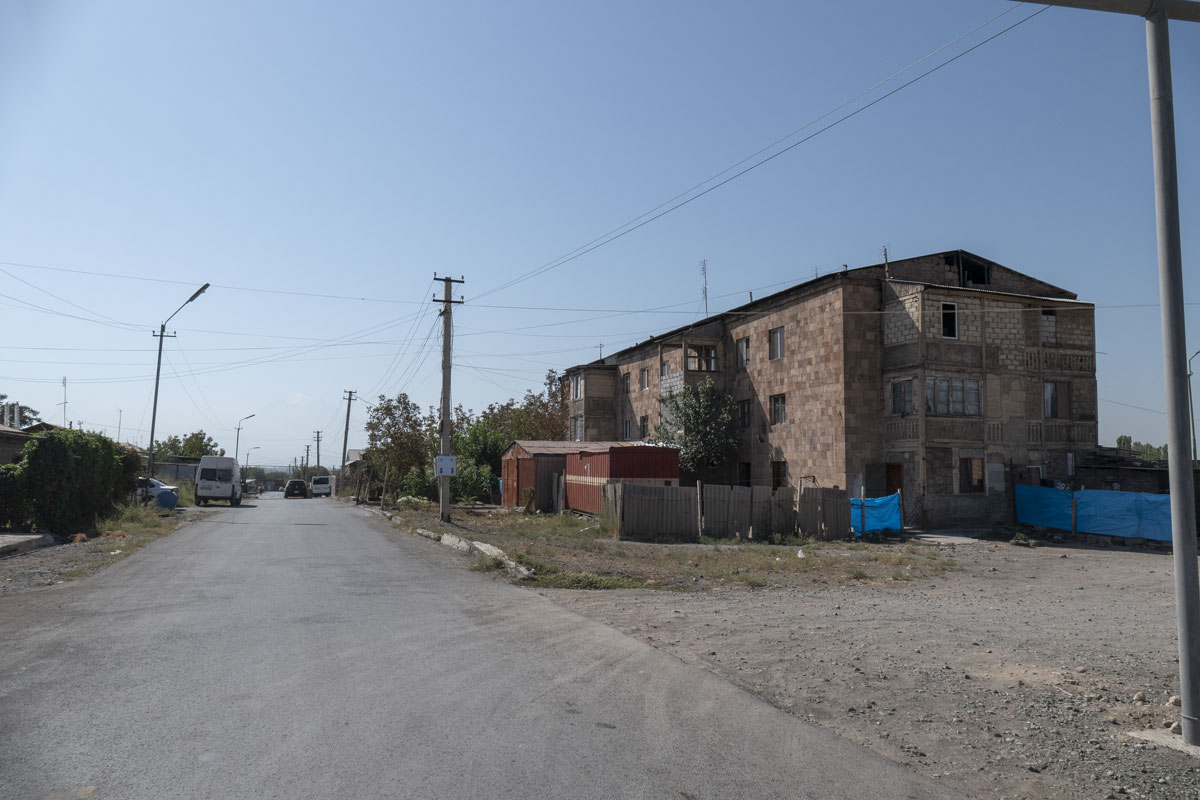
The very first house at the entrance to the village is difficult to say when it was built or if it was even built. It feels like the Yazidis built it from bricks they brought with them from Iraq.
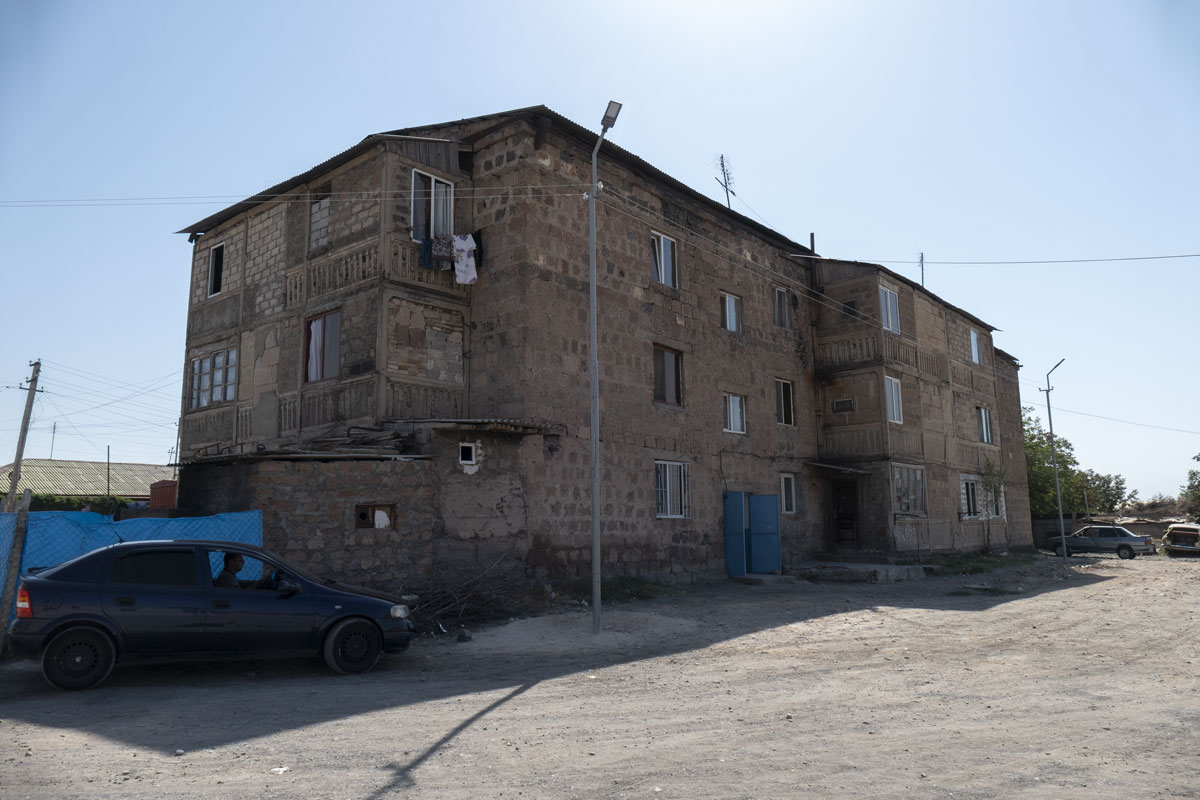
This is a terrible state of dilapidation. Interestingly, there is a curtain hanging in the window of the entrance — apparently, people also live on the landing.
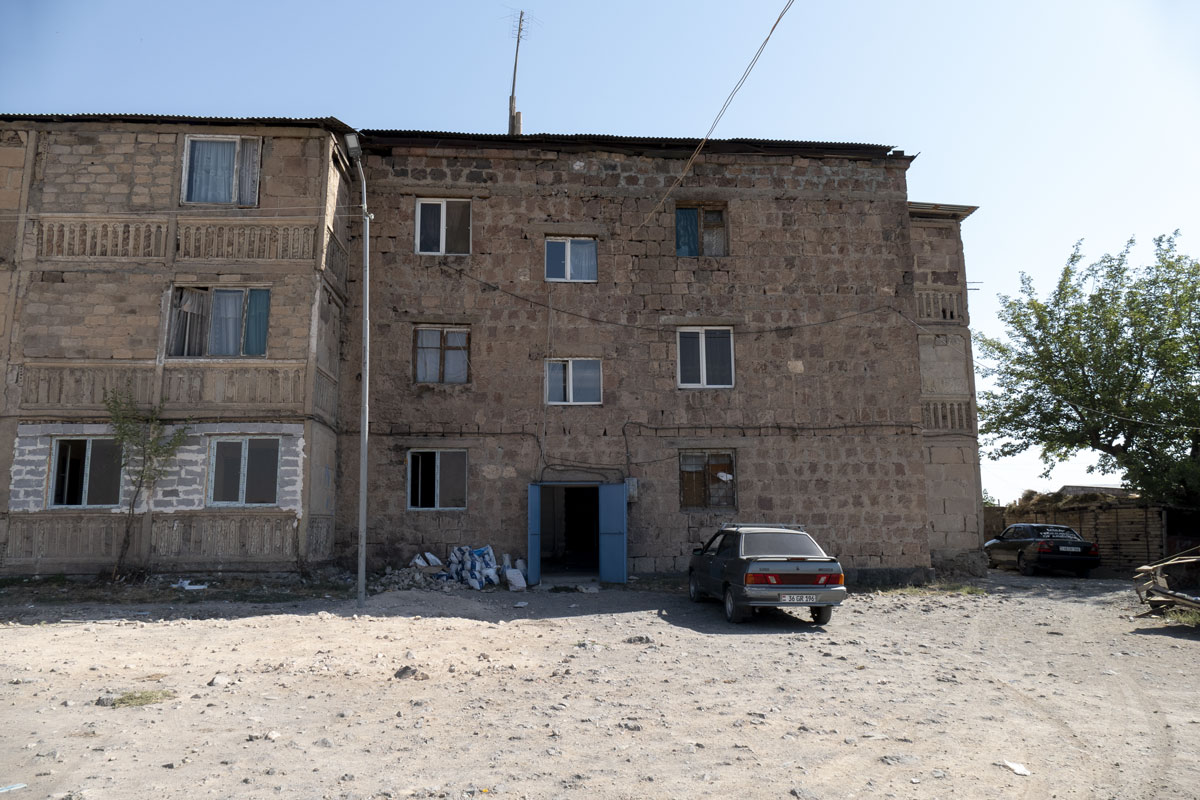
In the courtyard, instead of a children’s playground or garages, there is a pile of manure. The stench spreads throughout the street, and the excrement lies in forty-degree heat.
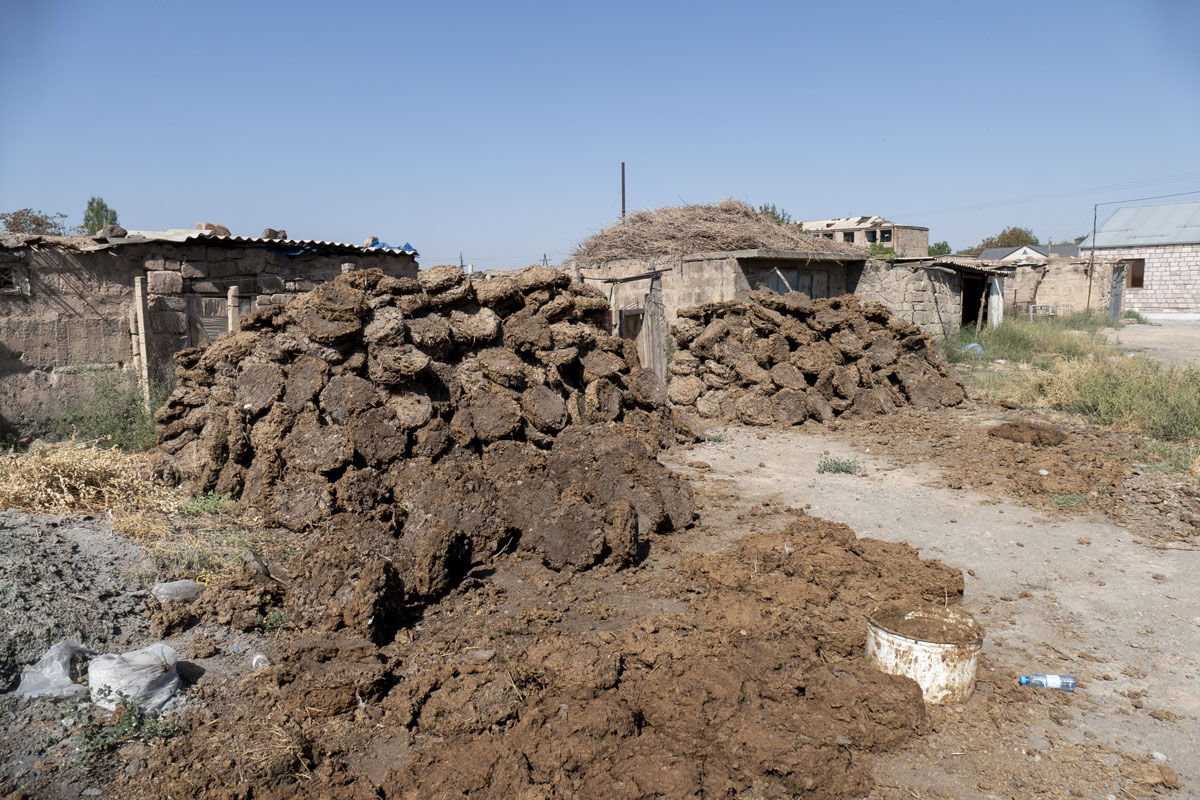
Piles of manure, like the gates to Persepolis, lead to the entrance of some kind of barn. Perhaps livestock is raised there, and it’s also possible that people live in it.
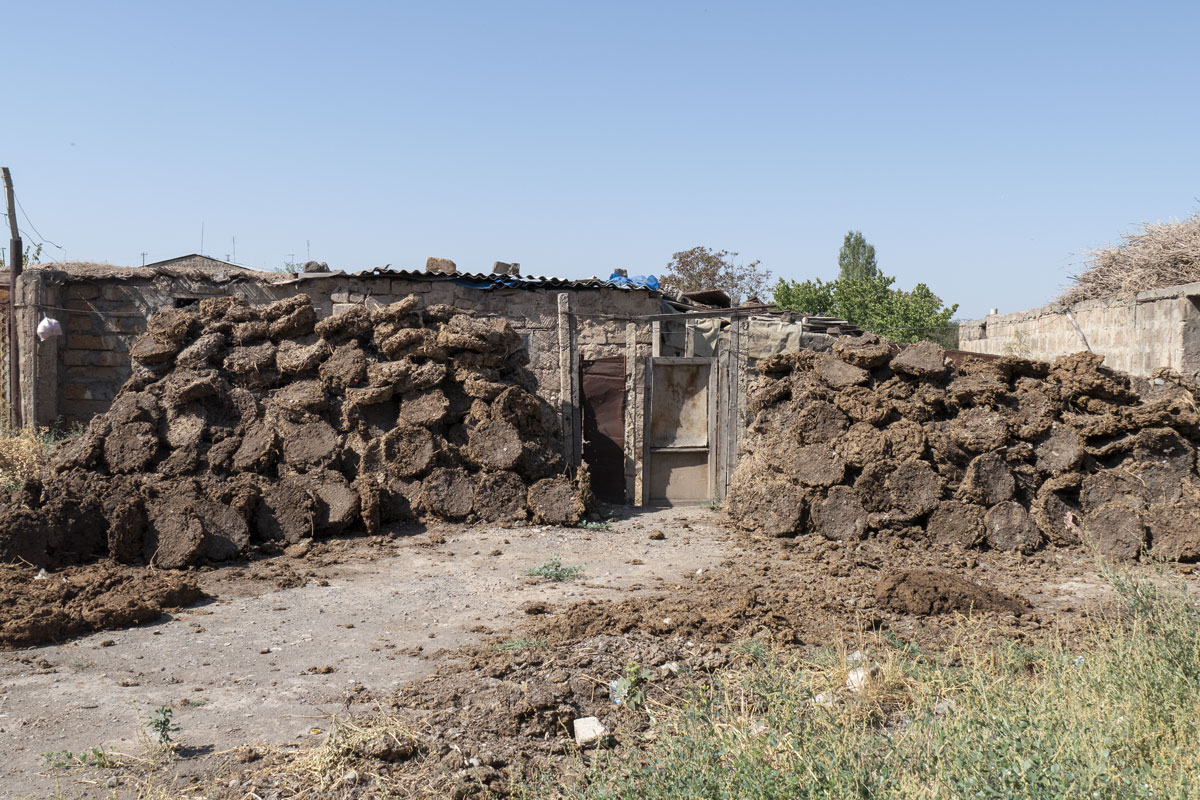
Not only Yazidis but also Armenians live in the village of Aknalich. It’s impossible to tell who lives where just by looking at them. There is a school and several market stalls in the village. If there is a water supply, it’s clearly not in all homes. There is no need for research to understand that water and electricity in Aknalich are intermittent, and in winter, the village has big problems with heating.
The next group of houses was slightly better. At least, the walls were not falling apart.
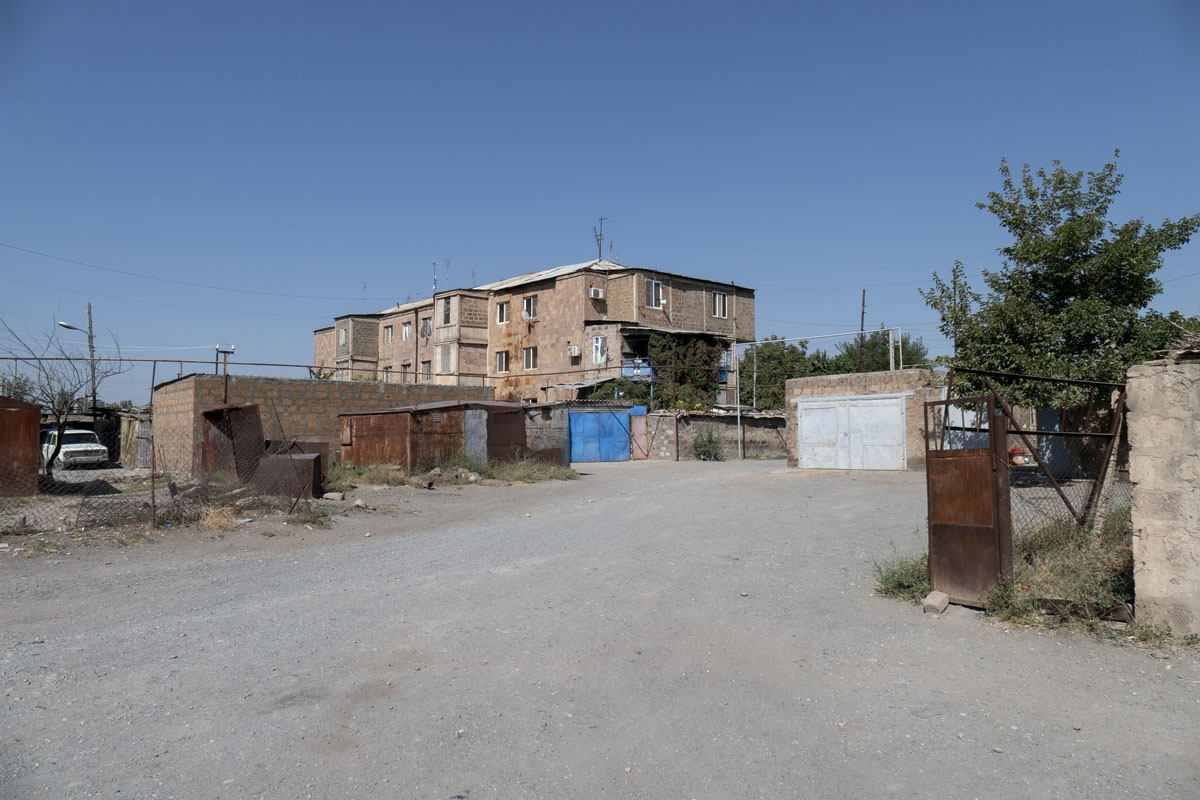
All the houses have plastic windows installed. Most likely, this is affordable assistance from the authorities in Armenia.
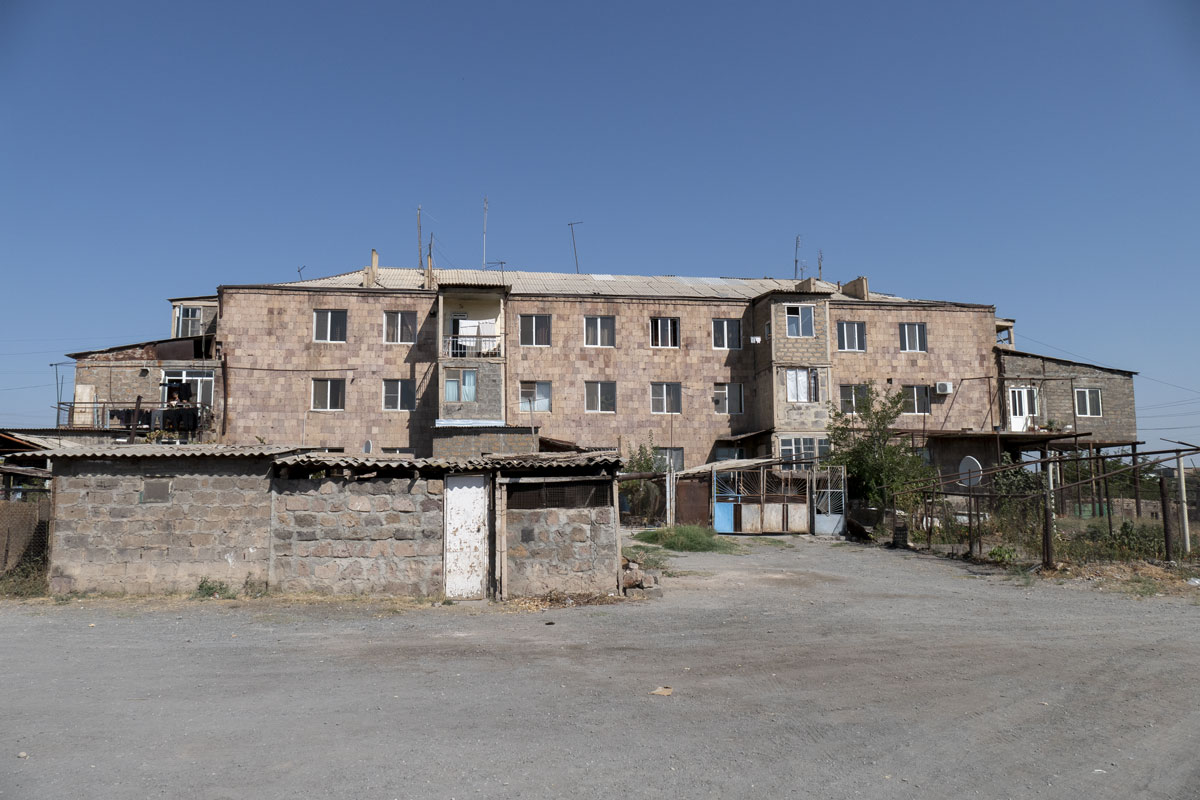
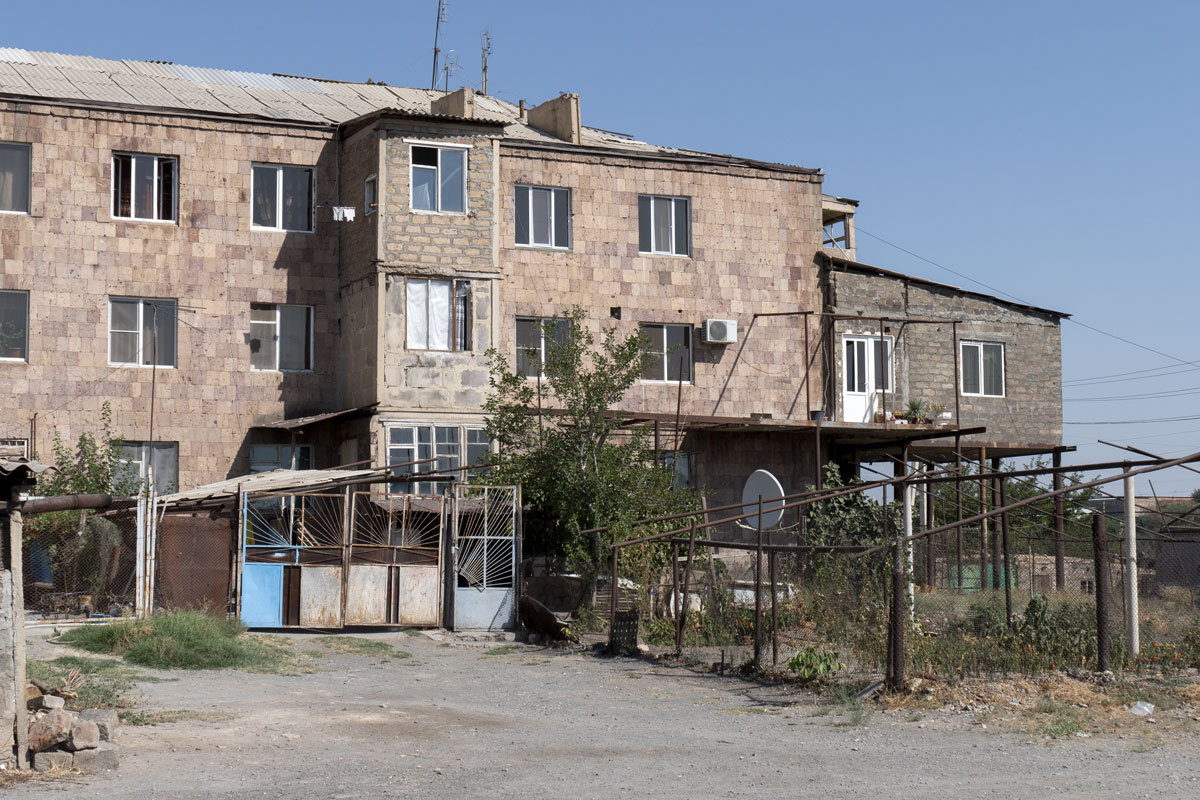
The Yazidis left Iraq, but Iraq left with them.
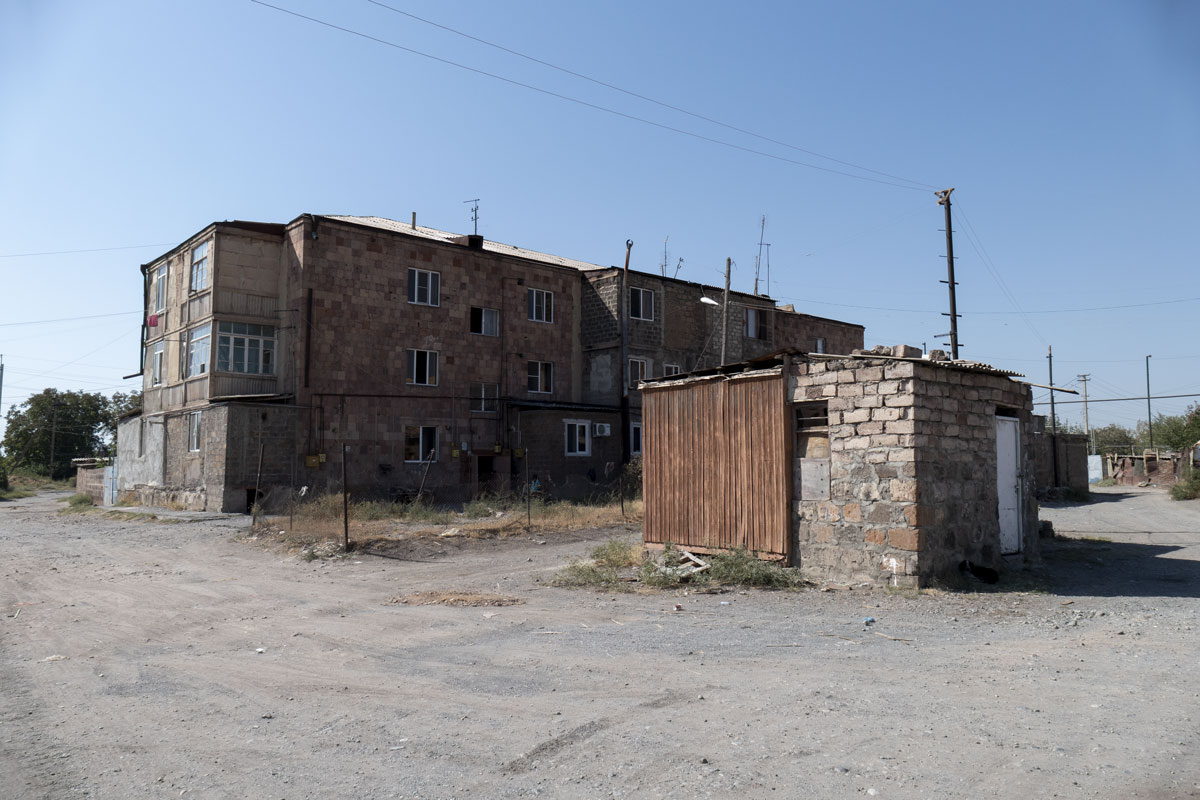
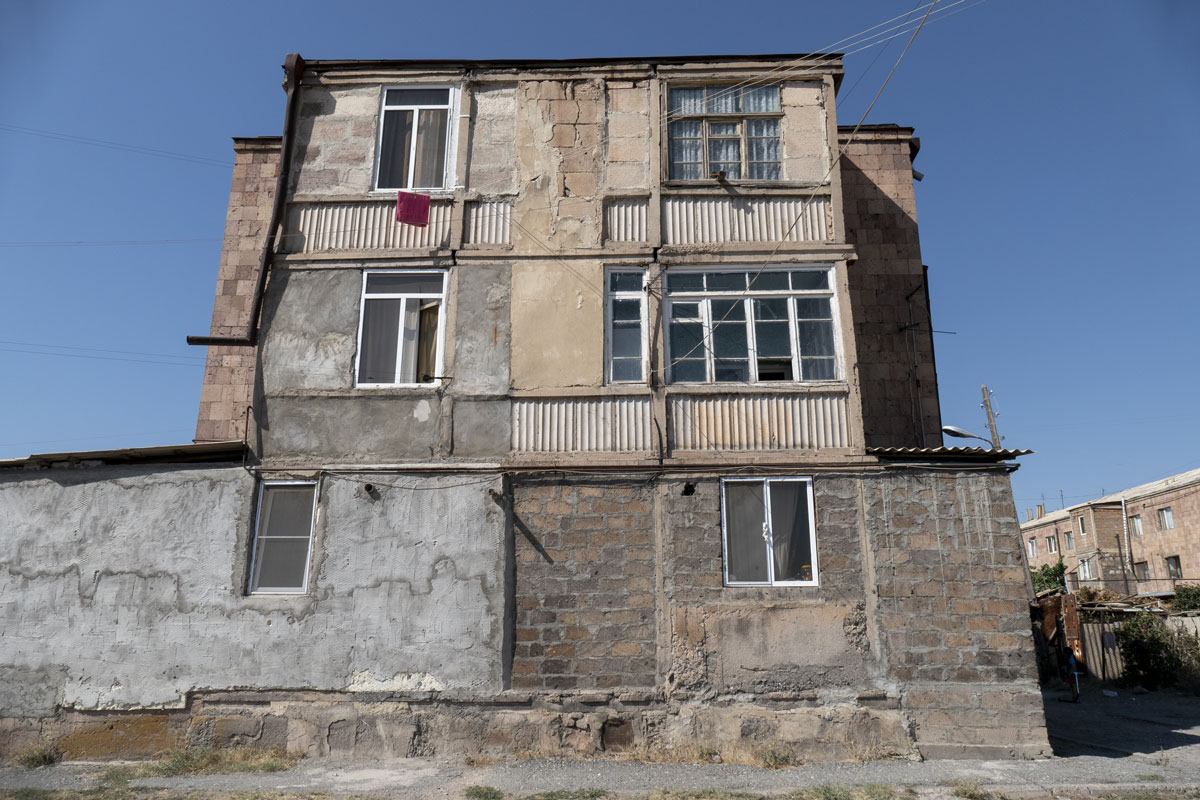
There were several Ladas, rusty garages, and a crumpled wire fence in the yard.
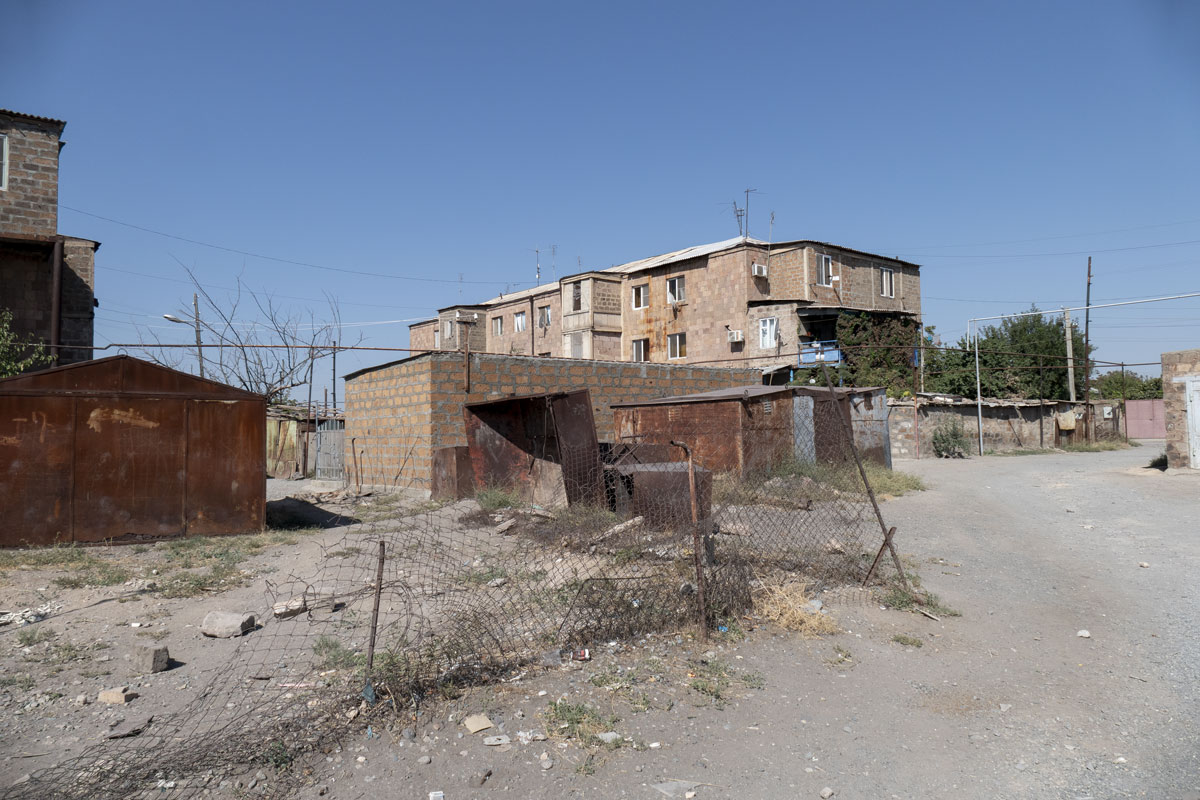
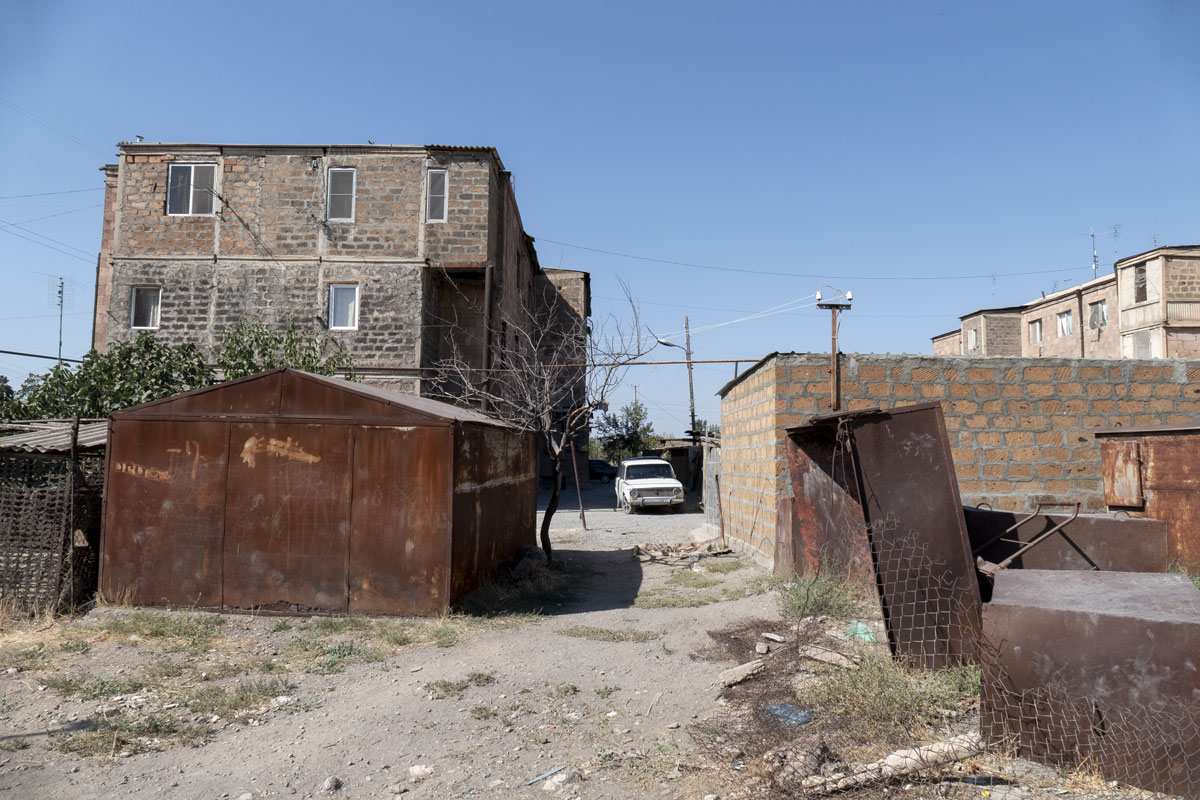
The front lawn is enclosed by the same wire fence. Skinny turkeys graze behind it, and their appearance scares more than all ISIS terrorists combined.
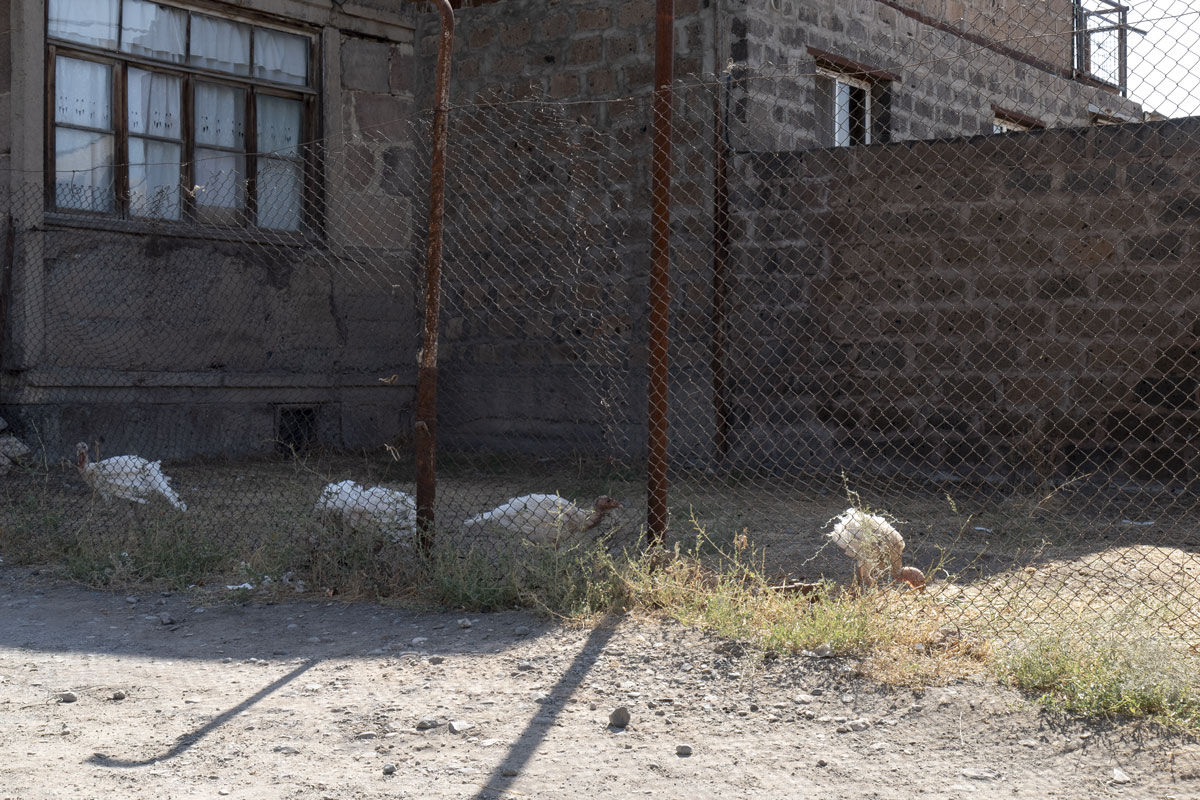
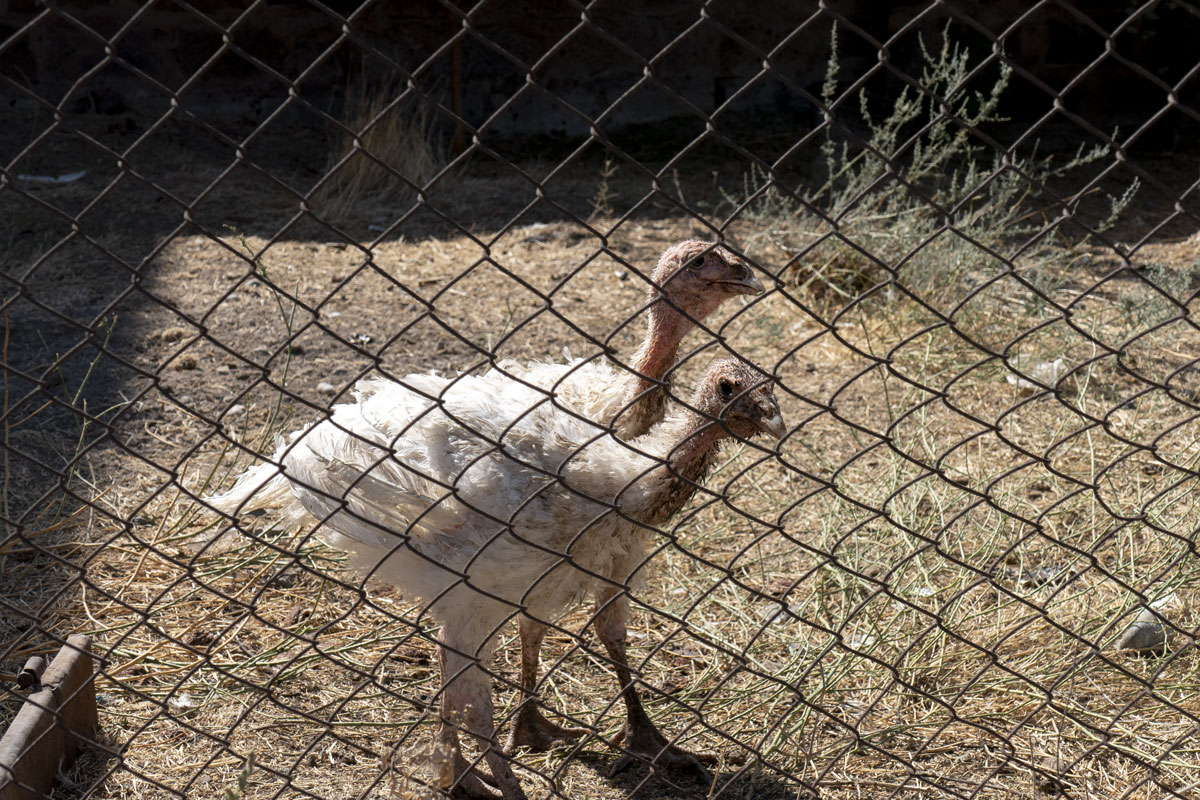
Discovered a pigeon house.
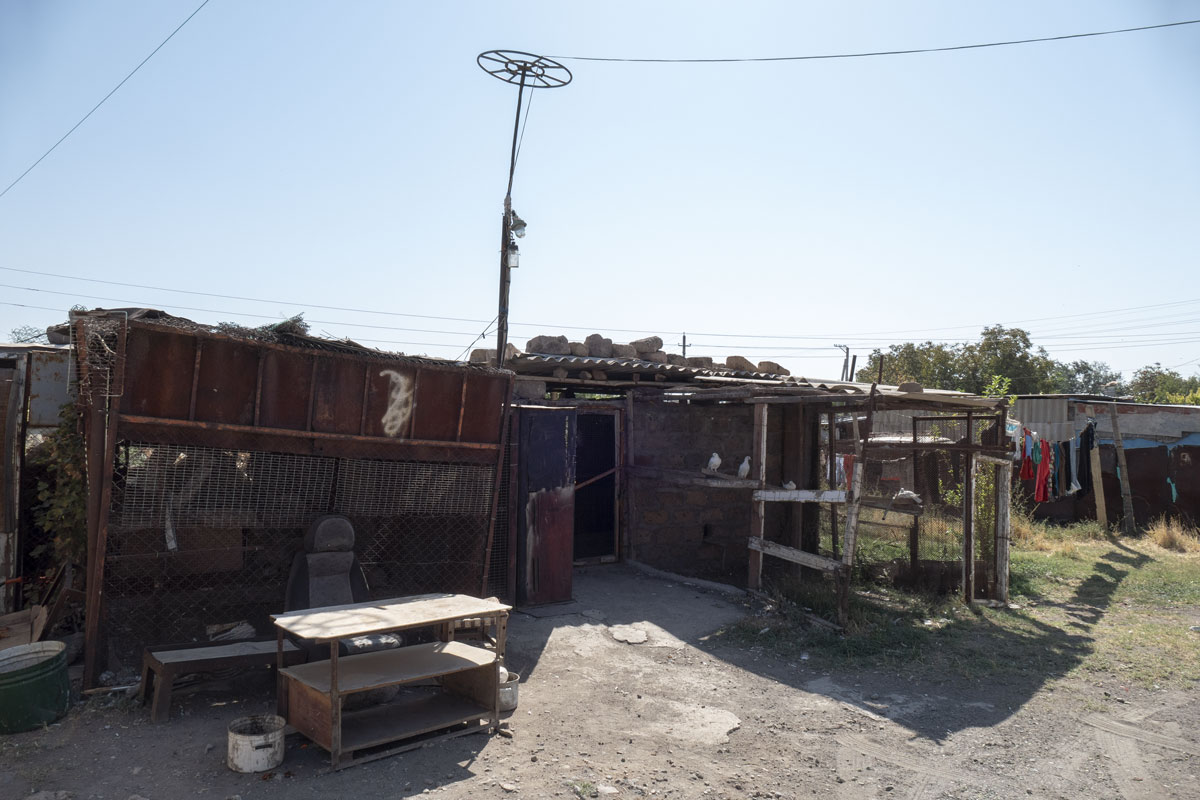
The pigeons are also skinny, but at least not as frightening as turkeys. It’s interesting whether they breed them for their beauty or for stew?
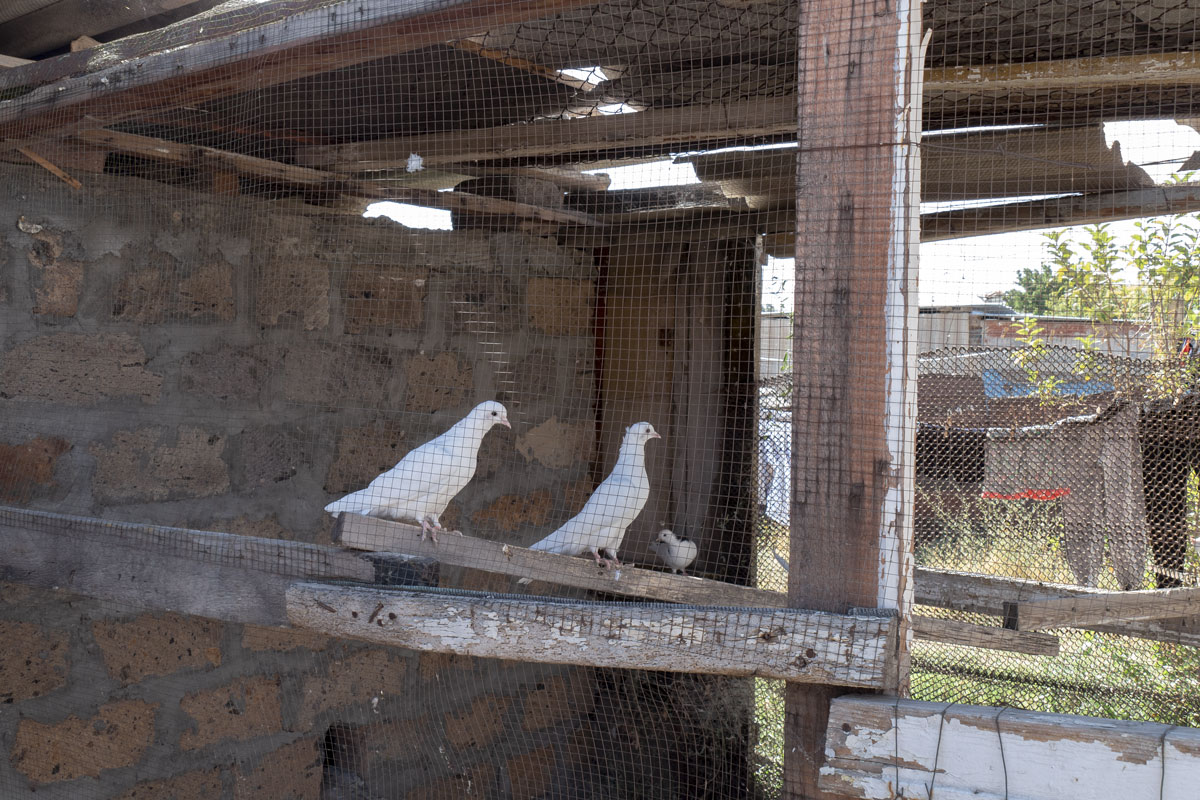
There was a forty-degree heat outside. There were no people around, only a group of children led by a Yazidi grandmother was found near one of the entrances.
The grandmother sat on a pedestal made of a car seat with honor. The children played old age using the grandma’s cane.
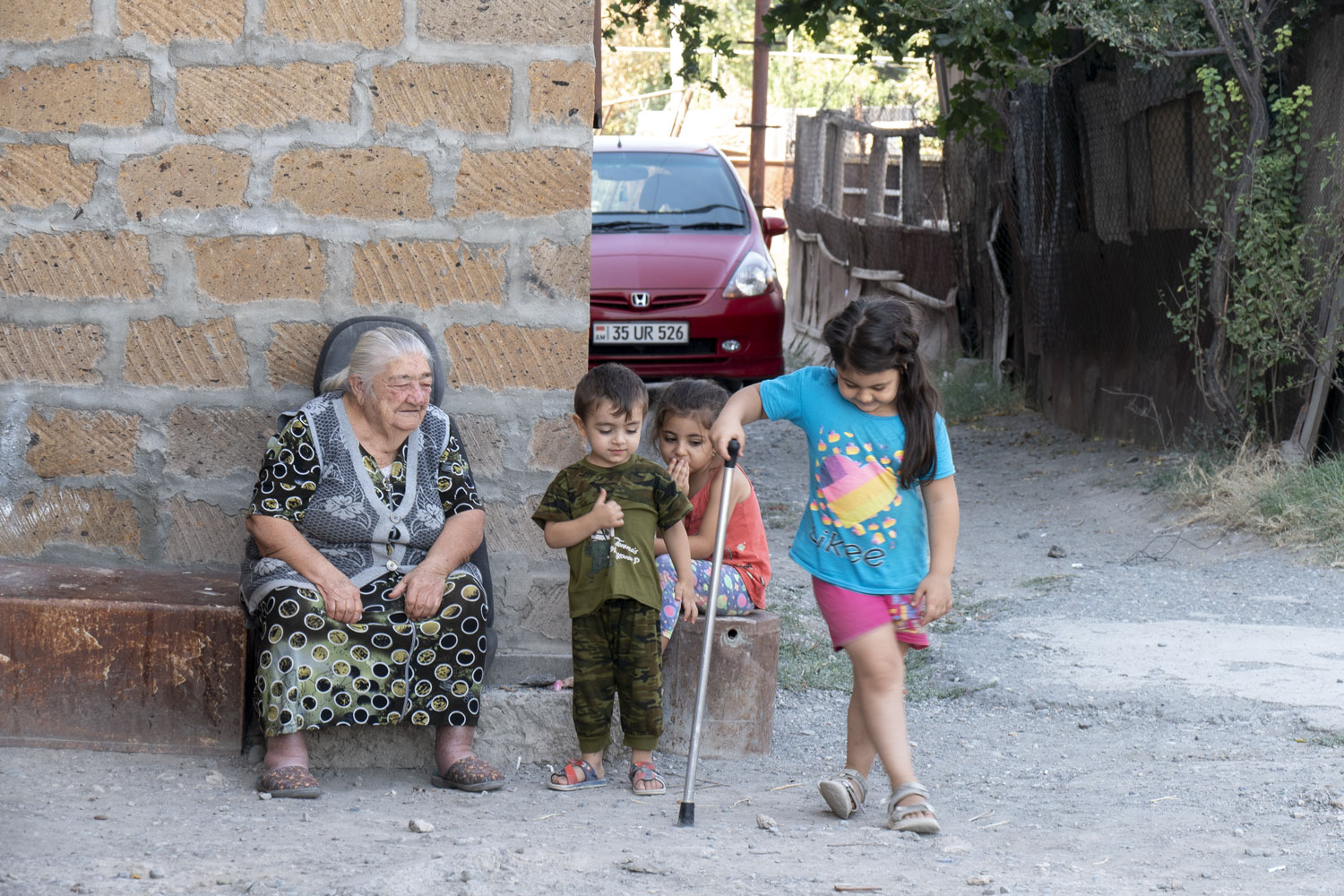
I tried to talk to them. I said “Zdravstvuite”, “Hello” and “Marhaba”. There was no response.
Then I tried in Arabic: “As-salamu alaykum”. The children responded in unison: “Wa alaykumu as-salam”. I tried to explain that I was from Russia: “Ana min Rusiya”. In response, there was a lack of understanding.
The Yazidis speak a dialect of Kurdish. They do not know any other languages, not even Arabic. “As-salamu alaykum” is the only point of contact with them that I found.
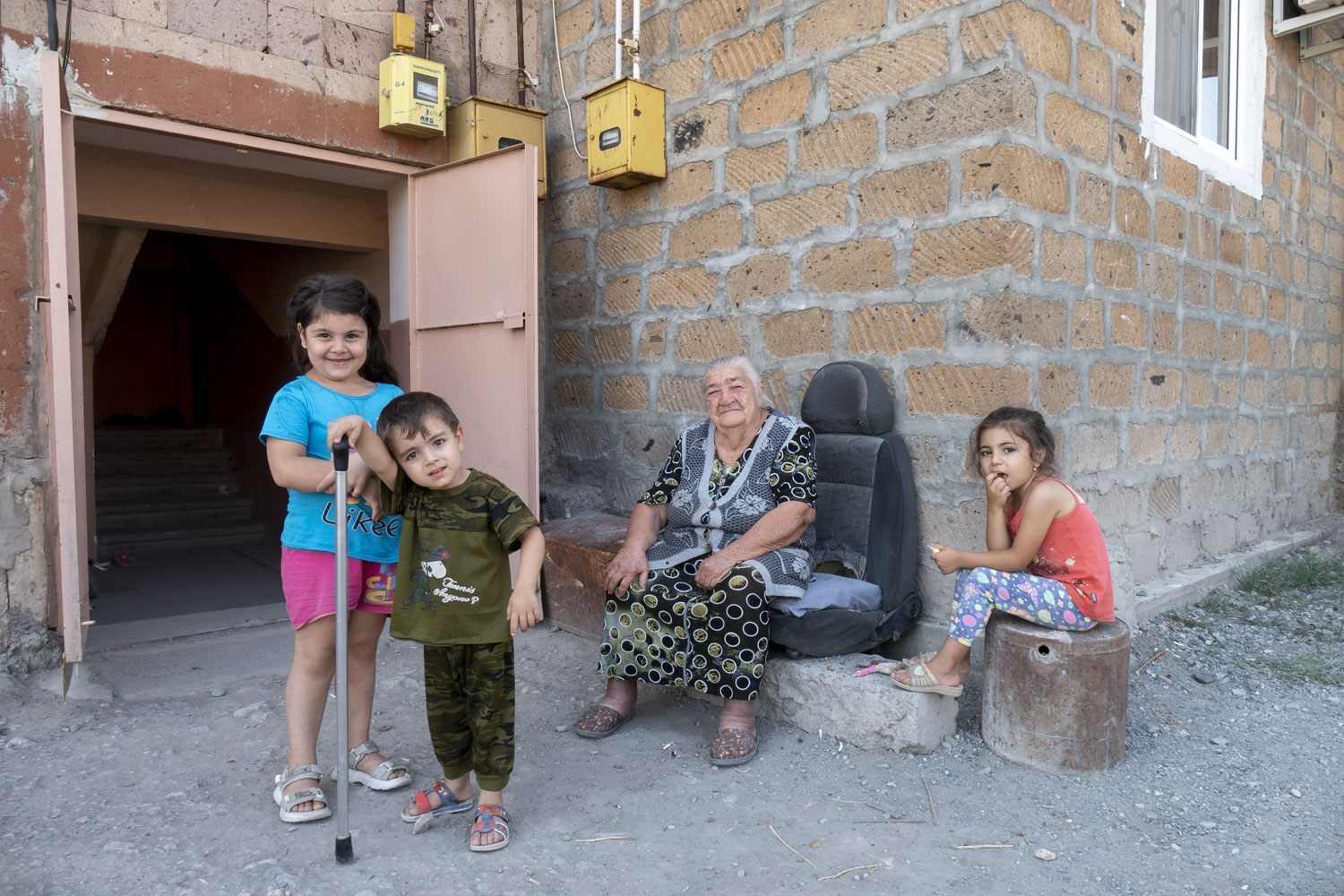
There are trade tents behind the houses. They do not sell anything special: soda, chewing gum, Snickers. Bread, eggs, flour. In general, all the necessities. Next to the store is a bakery where they cook flatbreads.
I decided to buy one flatbread. It cost so little that the seller didn’t have change. As a result, they gave me a whole bag of these flatbreads and didn’t take any money!
It’s amazing that people remain human even after genocide, terror, and a war of extermination.

The cherry on top of Aknalich is the Yazidi temple. There it is, visible on the horizon, behind the wasteland and broken road.
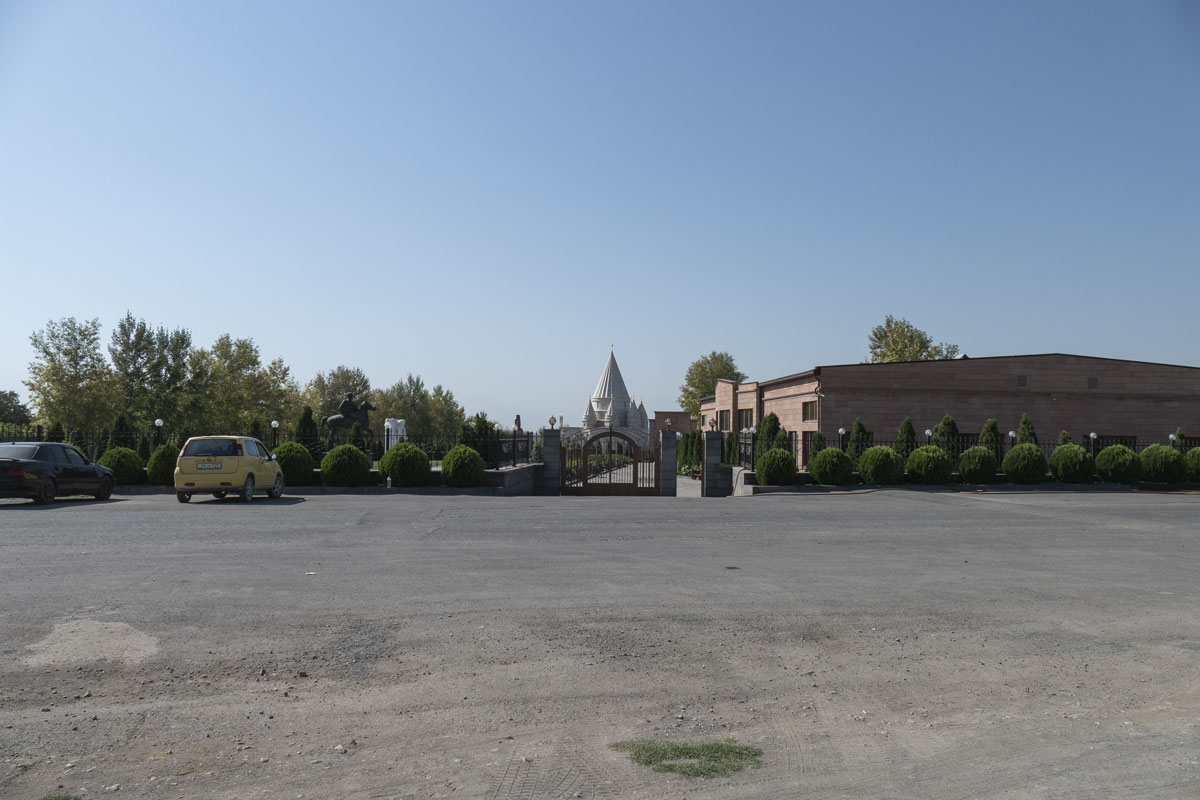
The territory of the temple is the only decent place in the entire neighborhood. It’s often the case in Russia, too. For example, Sergiev Posad is drowning in mud while priests indulge in luxury.
But still, there is a special contrast in Aknalich.
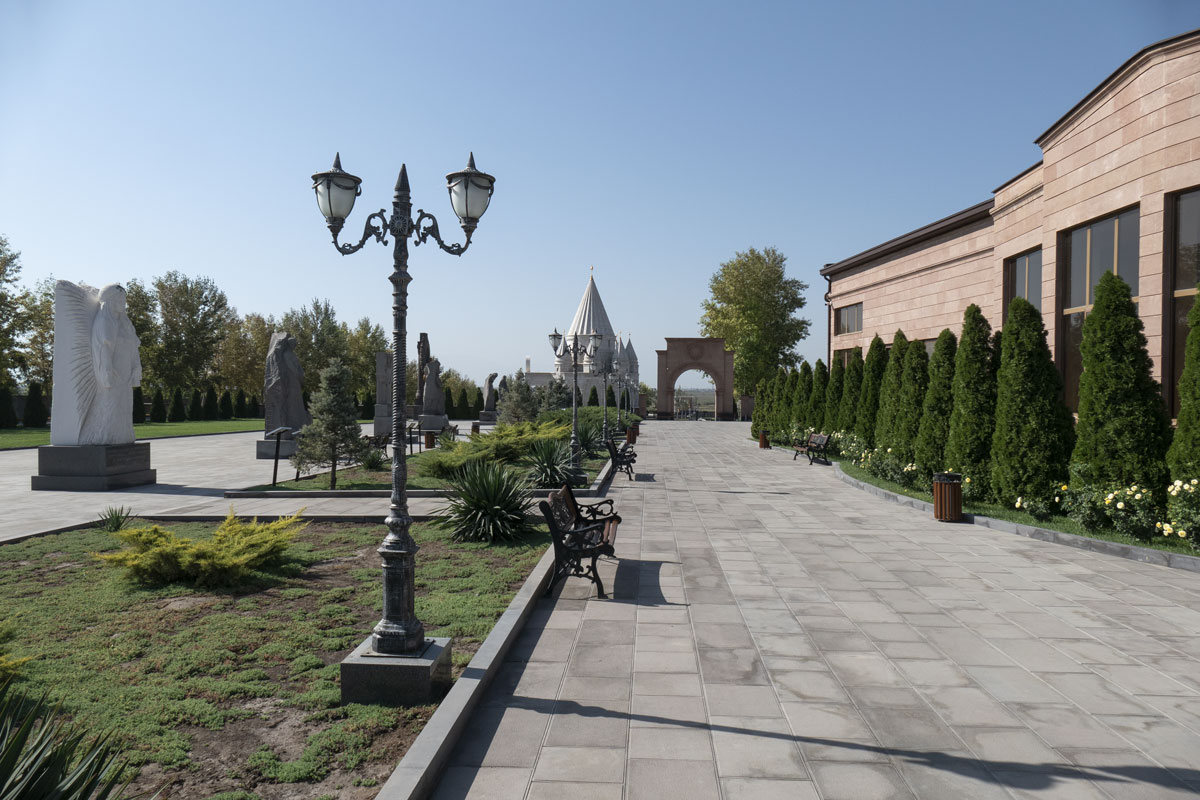
There is a sculpture of a horseman in the park. This is Davreshe Avdi, a Kursk military leader, a hero of folk tales. He led resistance groups against the Ottoman Empire in the 18th century.
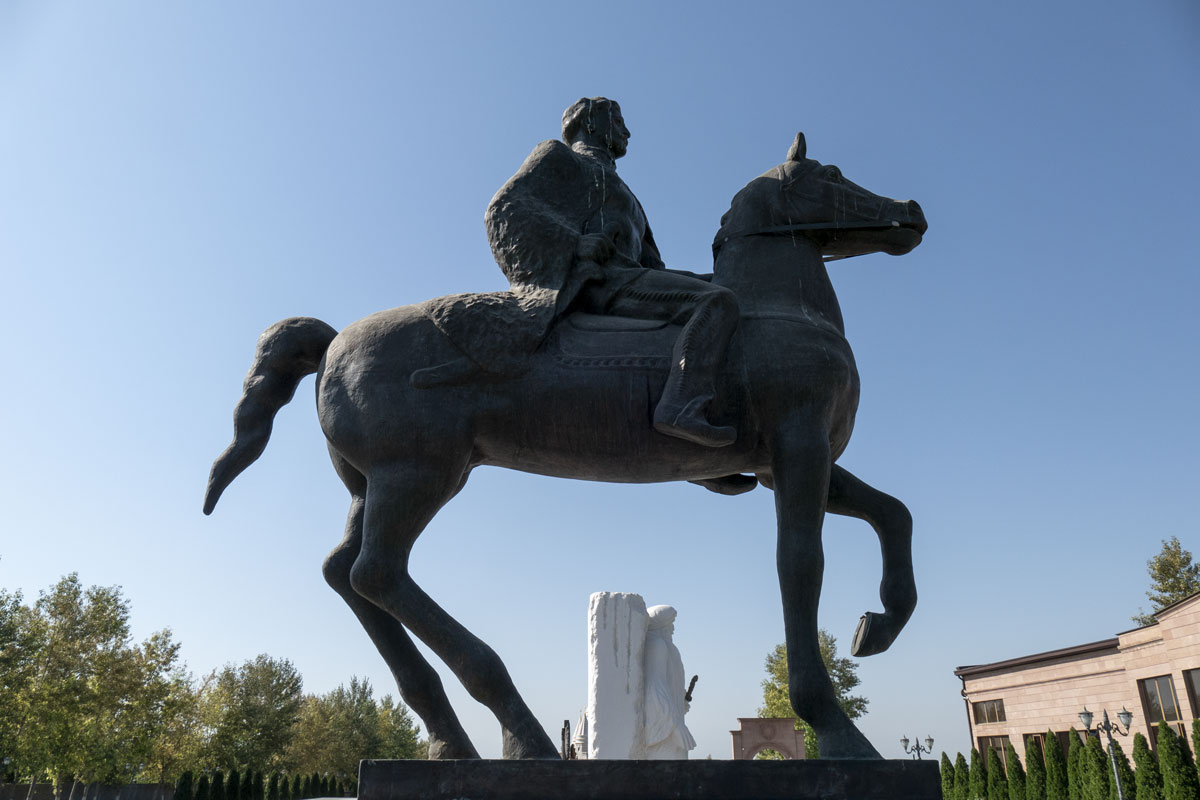
The same lifeless statues stand for other national heroes, who are known outside the diaspora barely more than nothing.
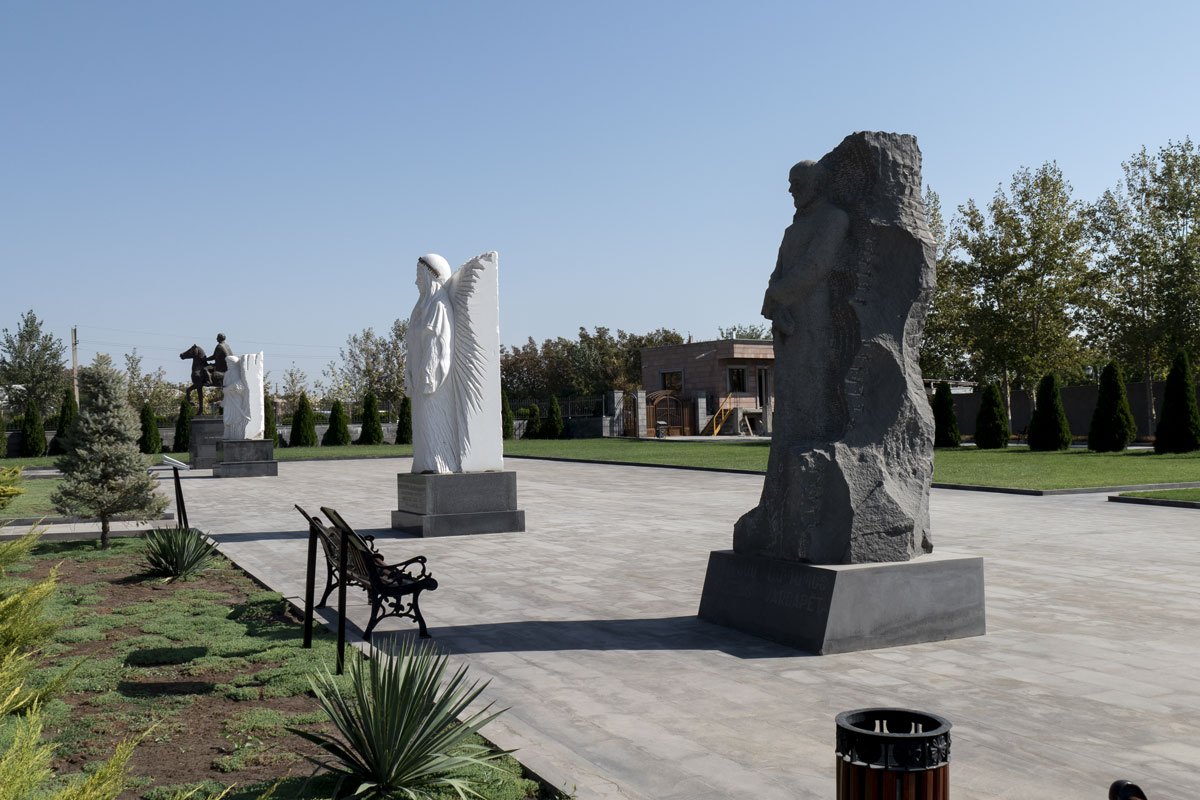
And here is the temple itself.
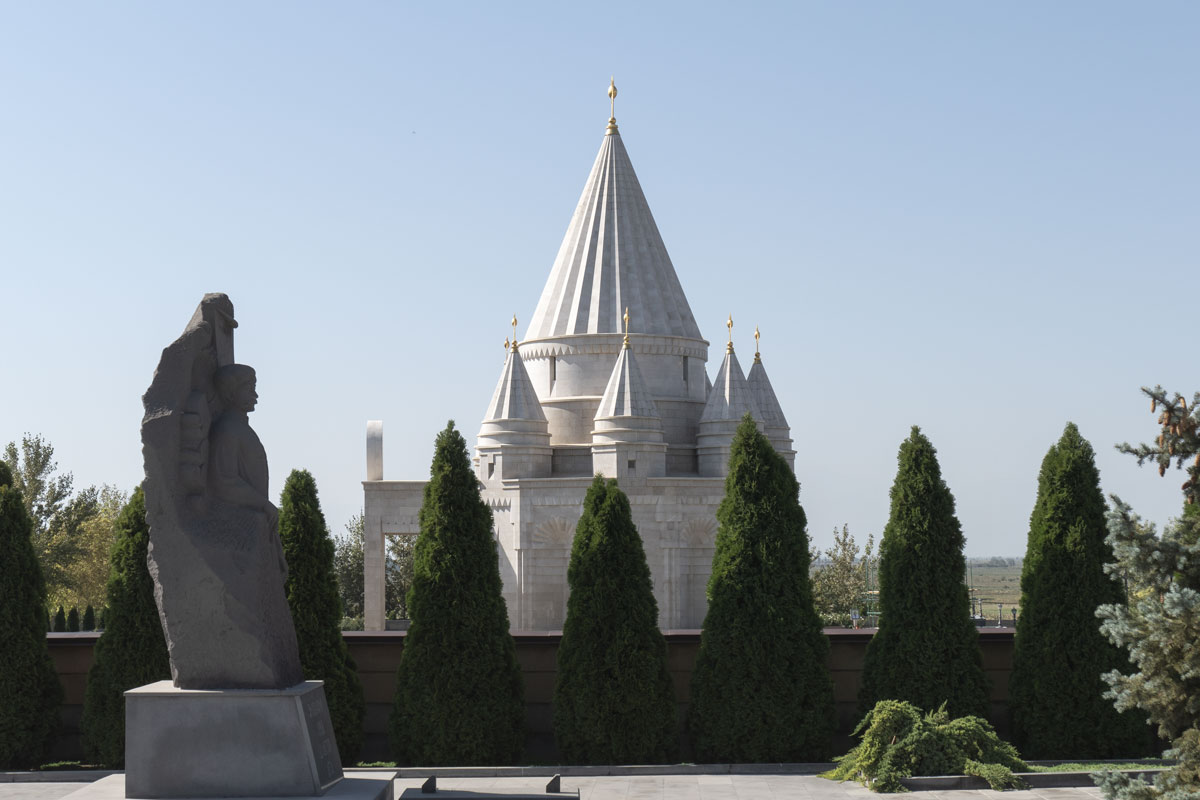
Yazidi temples are the most unusual in the world. Their domes are conical and corrugated like an accordion. Around the tall central dome, there are smaller domes that form a circle. The whole composition looks like decoration made of cream squeezed through a pastry bag with a special nozzle.
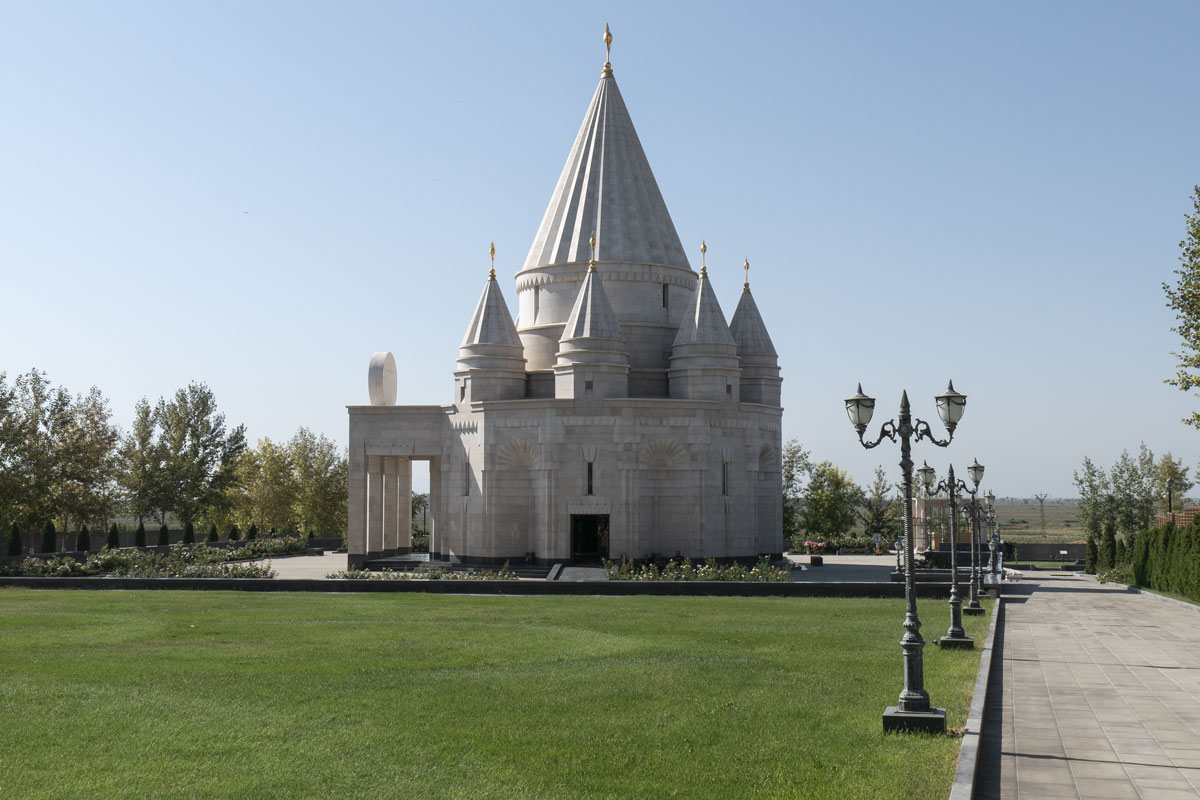
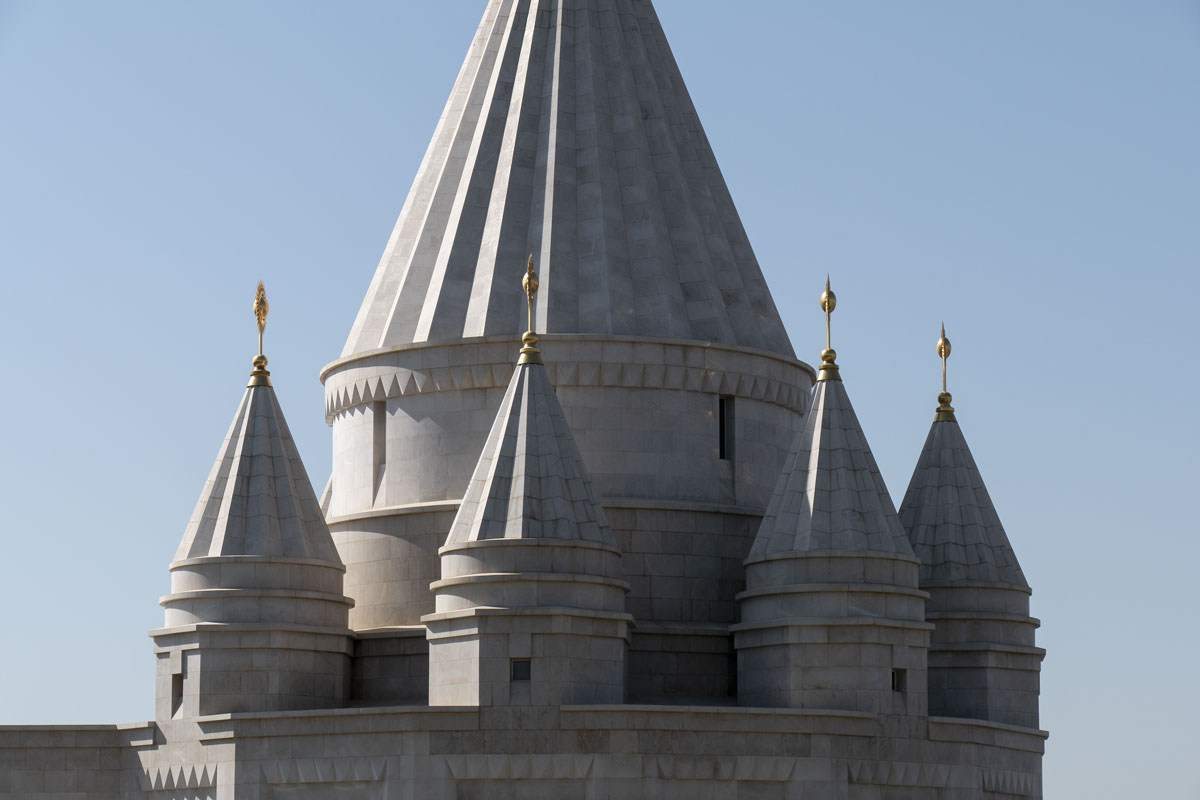
But the most unusual thing is that gold suns adorn the domes of Yazidi temples.
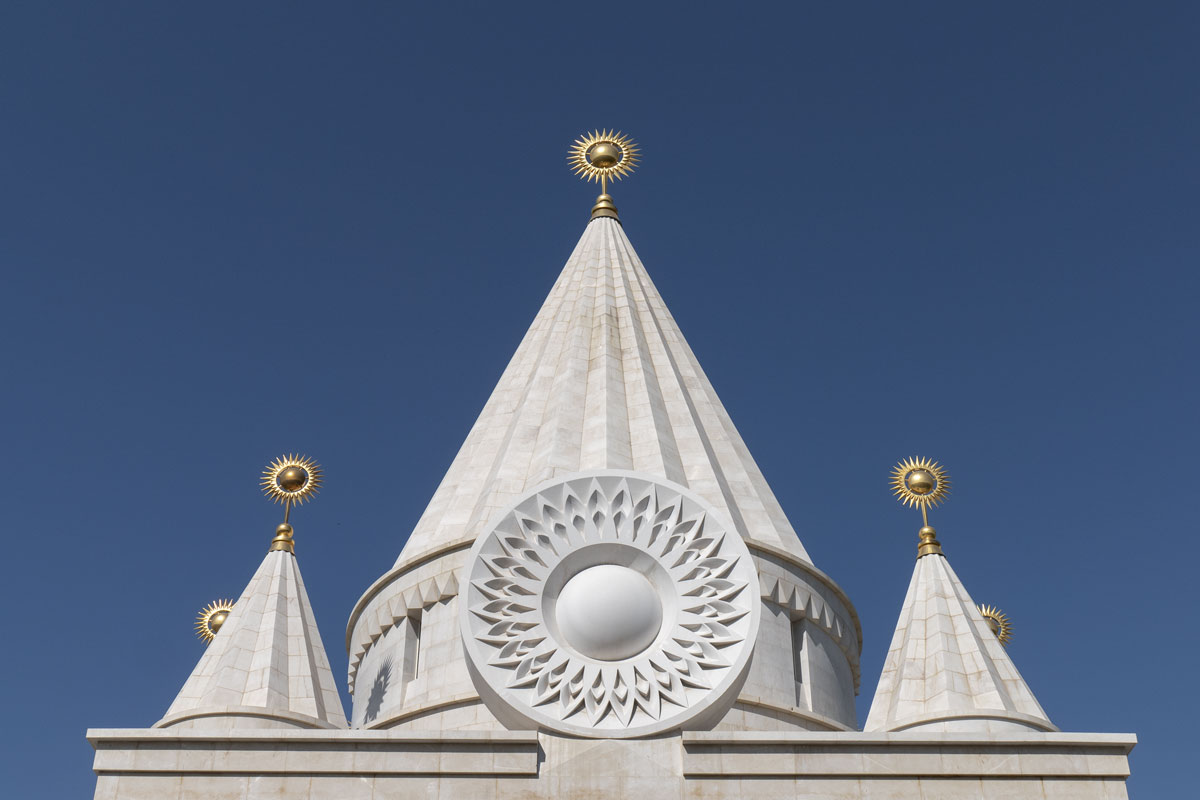
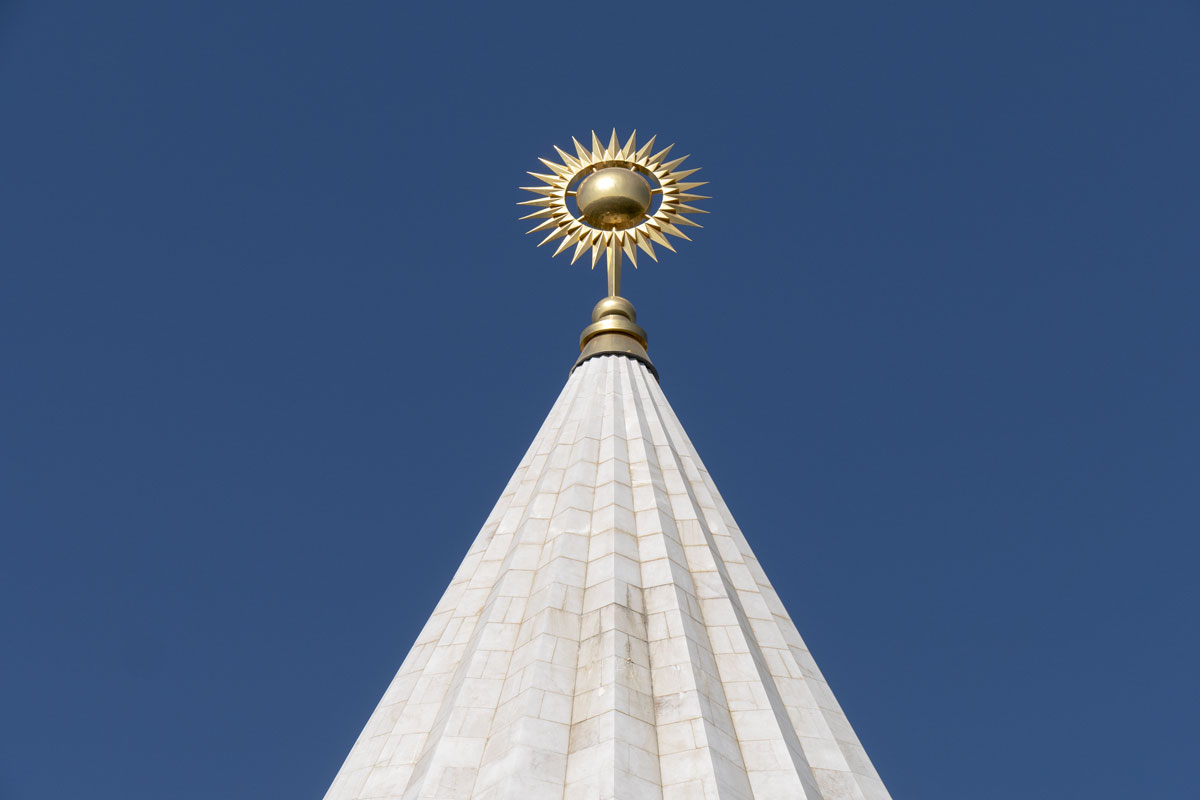
I can imagine how many problems this sun has caused for the Yazidis.
The origins of the Yazidi religion lie in Zoroastrianism, the oldest monotheistic religion. Zoroastrianism emerged in the 7th century BCE on the territory of Iran. Zoroastrians believed in one god named Ahura Mazda, whom they depicted as an old man hovering on magnificent wings. His prophet was Zarathustra.
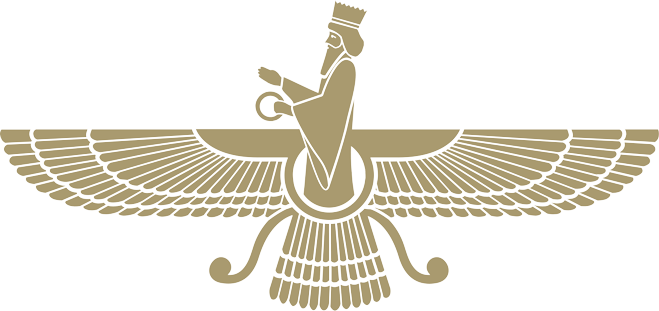
Zoroastrianism asserts that god exists in the physical world in the form of light. The Sun is considered to be a prototype of Ahura Mazda. Therefore, when performing prayers, Zoroastrians turn towards the Sun.
Yazidism adopted this tradition from Zoroastrianism. However, Zoroastrianism declined after the Arabs conquered Iran in the 7th century and brought Islam with them. In the 12th century, when the Arab caliphate fell apart, Yazidism was created from the fragments of the two religions.
The foundation of Yazidism is a trinity which, unlike in Christianity, does not include God Himself. Instead, it consists of three of His hypostases.
The God of the Yazidis is an incomprehensible, invisible essence that once created the world and then withdrew from participation in it. This concept is called “deism” by scholars of religion.
The Yazidi trinity is an incredibly strange concept.
On the one hand, it includes a divine peacock named Melek Taus, who was appointed by the creator god as the world’s manager. On the other hand, it also includes a very real person, the founder of Yazidism — Sheikh Adi ibn Musafir, who lived at the turn of the 10th and 11th centuries in Iraq. The third aspect is a certain Sultan Ezi, who is completely unclear. It is only known that he lived somewhere in the area of modern-day Syria.
How the Yazidi god created the world is a complex story.
According to the sacred Yazidi book “Mishefa Resh,” in the beginning, God created a white pearl from his own breast and an incredible bird named Anfar. Then God placed the pearl on the Anfar bird and sat on top of it himself. God incubated the pearl for 40,000 years, like a chicken incubates eggs. That’s why the pearl turned into a cosmic egg. When the egg cracked, the Universe hatched, with the Earth at its center. Isn’t that similar to the Big Bang theory?
According to another version, God himself emerged from the pearl-egg, which rested on the horns of a bull standing on a fish.
Then God created angels. In total, God created 7 angels in 7 days: one angel per day. The first angel was created by God on the first day, and his name was Azrael.
After that, God created Adam and Eve. From Adam’s thigh (not rib!), God created a certain Shahid bin Jerra, who then created the first humans on earth. Of course, these people were Yazidis.
God did not create animals and plants. He entrusted this task to the angels, while he himself withdrew from governing the world. The first angel, Azrael, became a mediator between God and the Yazidis. He is the alter ego of God and appears in the form of a peacock, which symbolizes immortality and the ability to procreate. The name of the peacock is Melek Taus, which literally means “Angel-Peacock.”
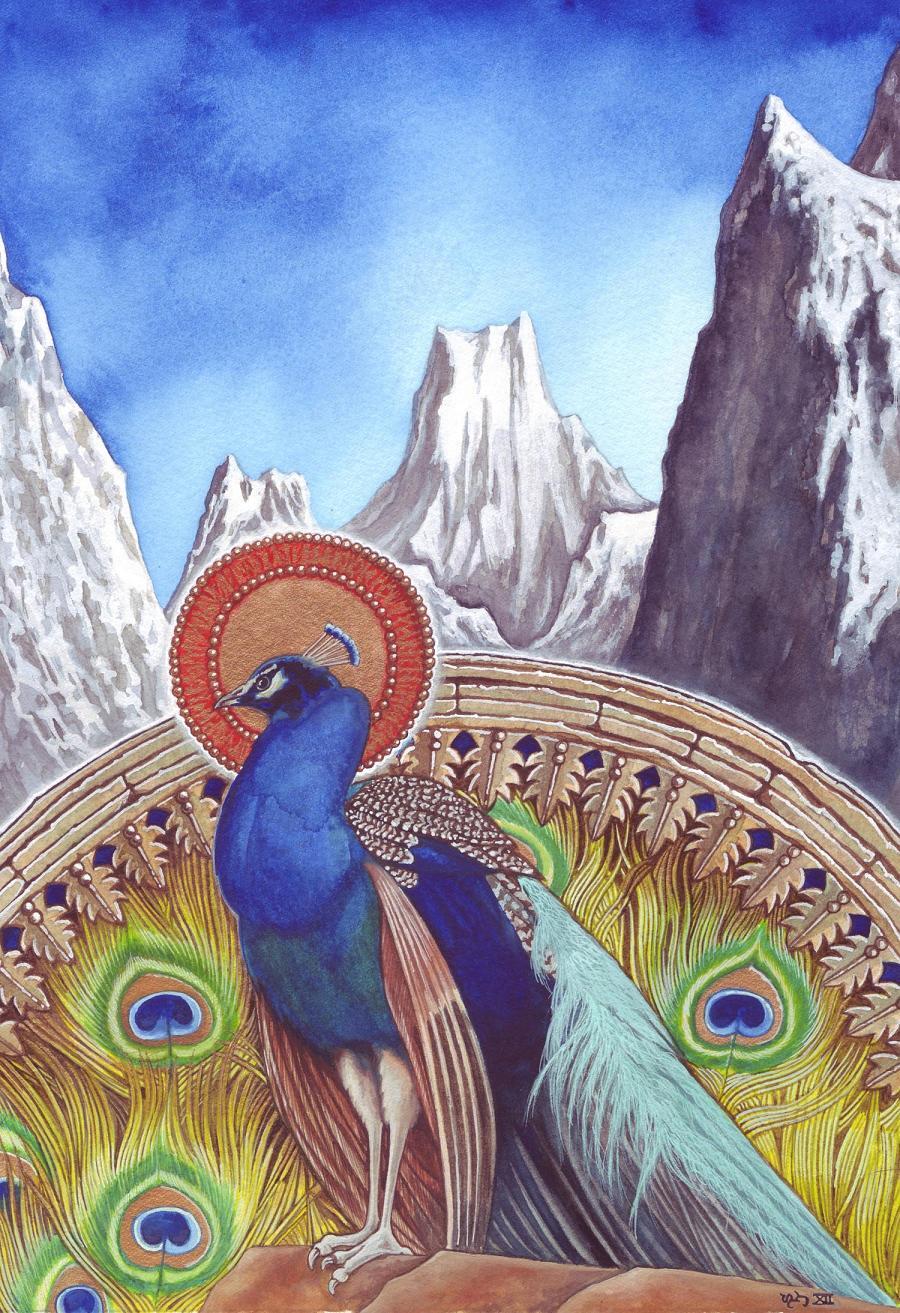
When God created Adam, he ordered all the angels to bow down before the first man. However, Azrael refused to obey and did not bow down to Adam.
This part contains the reasons for the hatred towards Yazidis by Muslims. The thing is that this myth was taken from Islam by the Yazidis. According to Islam, when Allah created Adam, he also ordered all the angels to bow down before him. One of the angels named Iblis did not do this. As a result, Allah cast Iblis out of heaven, and he became Satan or Shaitan.
Thus, from the point of view of Muslims, it turns out that Yazidis worship Satan.
Of course, this is not true. Yazidis not only do not worship Satan, but their religion does not even have the concept of global evil. Unlike Allah, the Yazidi god did not command to bow down to Adam. It was more like a recommendation. The angels were free to choose whether to bow down or not. Azrael decided not to do it.
This does not convince Muslims. After all, for Islam, it is not so important whether Yazidis worship Satan or just a peacock. In the eyes of any Muslim, worshiping any living being is a mortal sin and idolatry. Prayer towards the sun is also considered paganism and is punishable by death. To distance themselves from sun-worshipers, Muslims pray before sunrise. If the sun has already risen above the horizon, they can no longer pray.
So, the reasons for the genocide of Yazidis are very clear. Their incomprehensible and confusing religion causes fear and anger among Muslims.
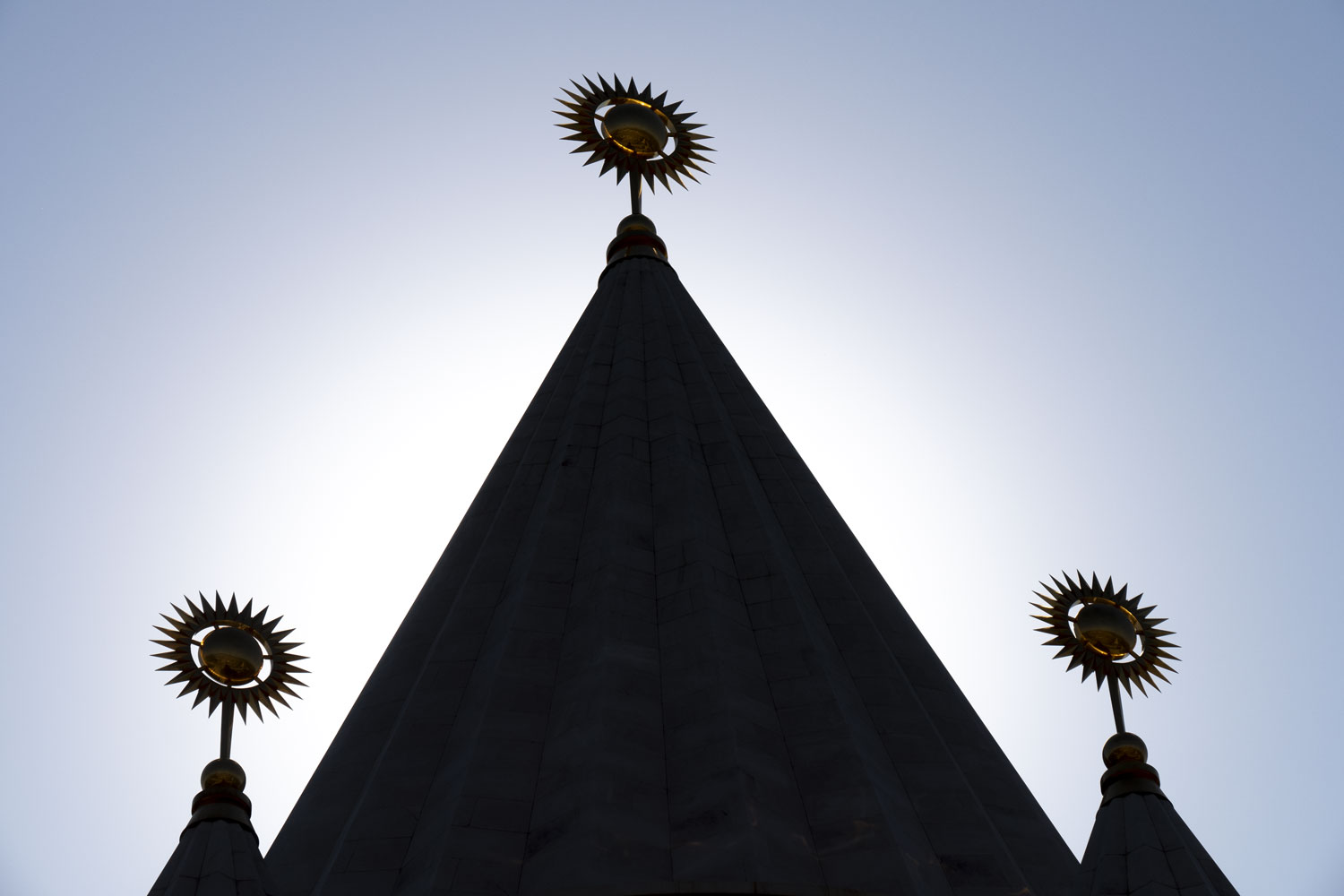
The emblem on the domes of the temple resembles not only the sun but also a pearl-egg. The rays can be interpreted as the creation of the Universe as a result of the Big Bang.
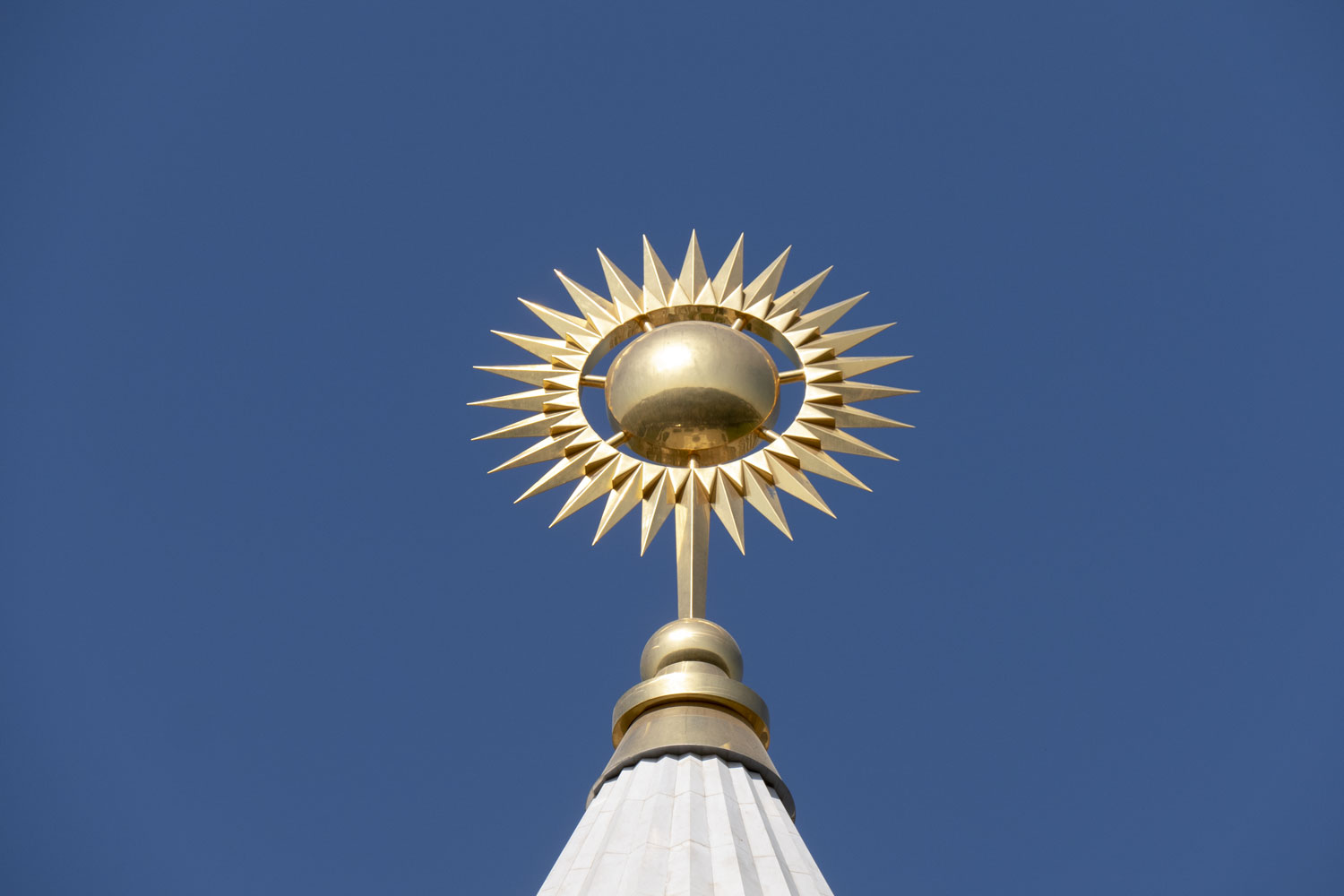
Work is still underway inside the large temple. Everything inside is covered with scaffolding, making it difficult to see anything. And there is nothing to see: just bare walls.

Only one wall is decorated with a mosaic depicting a peacock.

Here he is, the handsome Melek Taus. He looks like the logo of the Airborne Troops (VDV).

There is an old, small temple nearby. It was opened back in 2012, and it is the oldest Yazidi temple outside of Iraq.
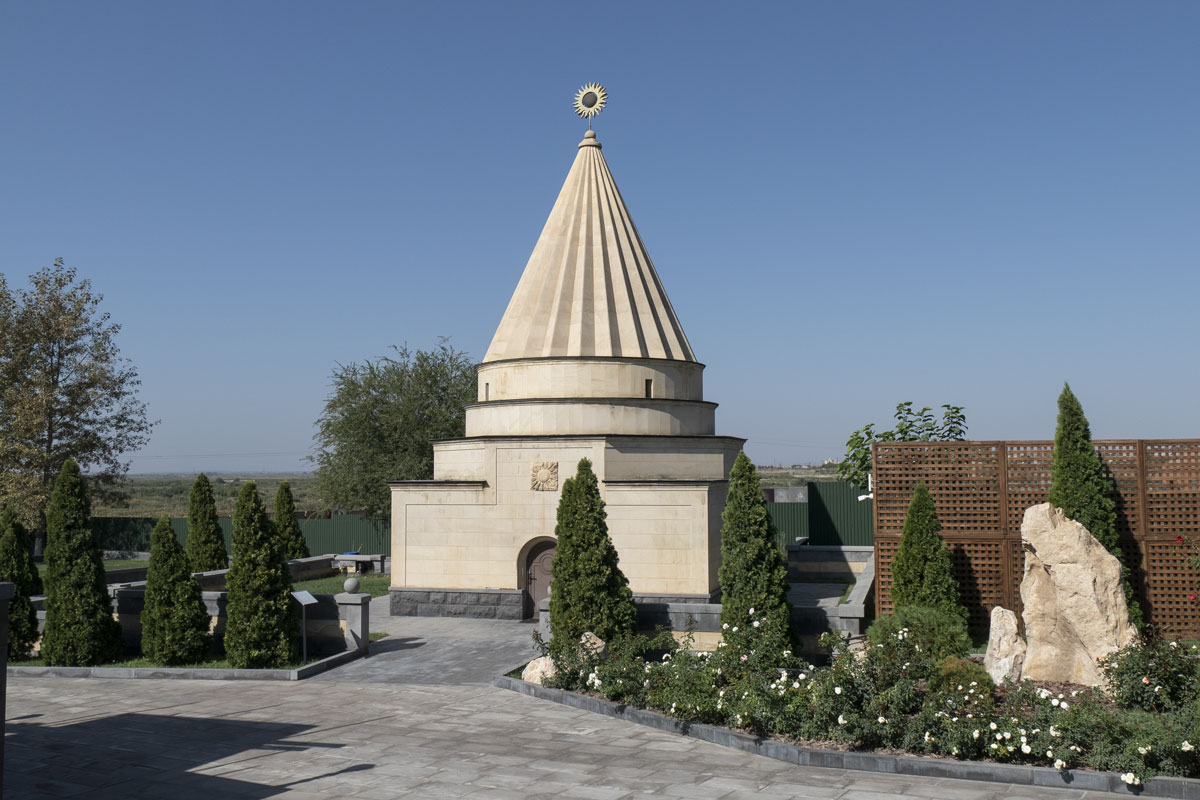
The entrance to the temple is through a low door, above which hangs a relief of the sun. Carefully placed next to the door are spoons for shoes: like Muslims, Yazidis take off their shoes before entering the temple.
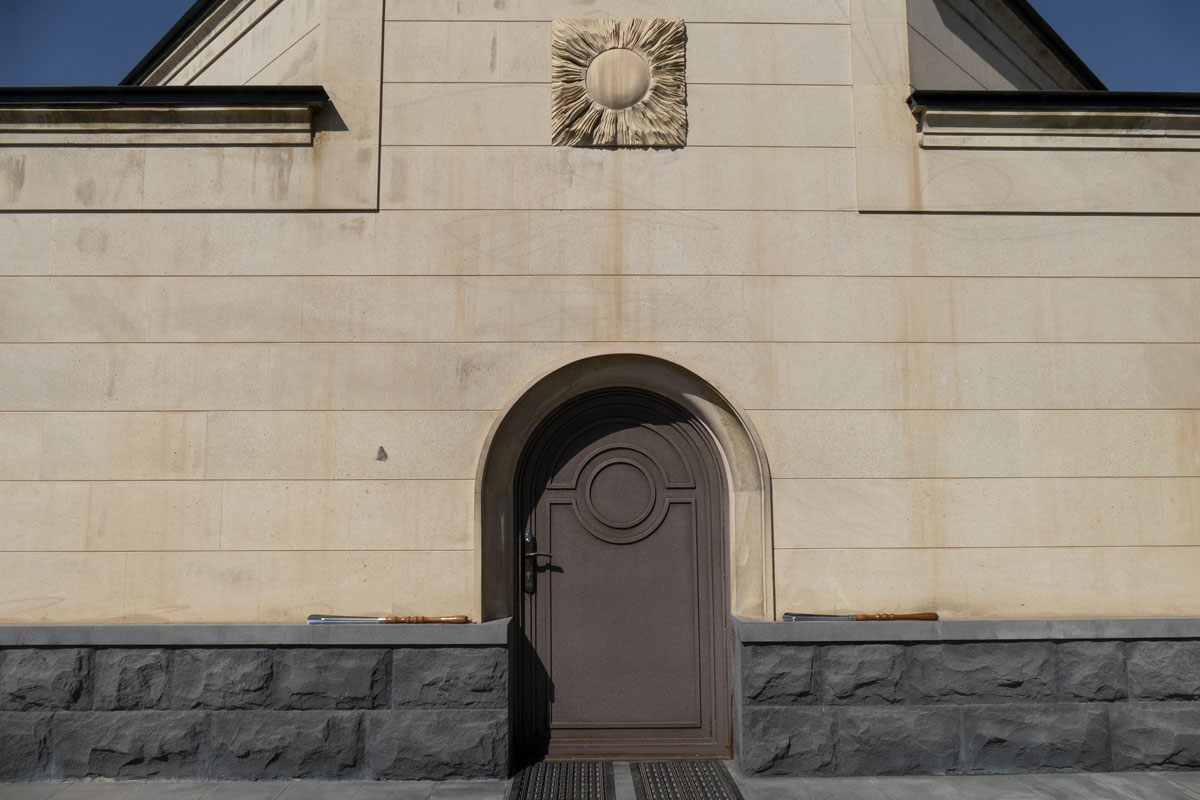
Inside the temple, there is a peacock in person.

Not just one, but with company.

Oh great Melek Taus!

Great honor to meet you!

My name is Andrew, and I am a traveler from Russia.



